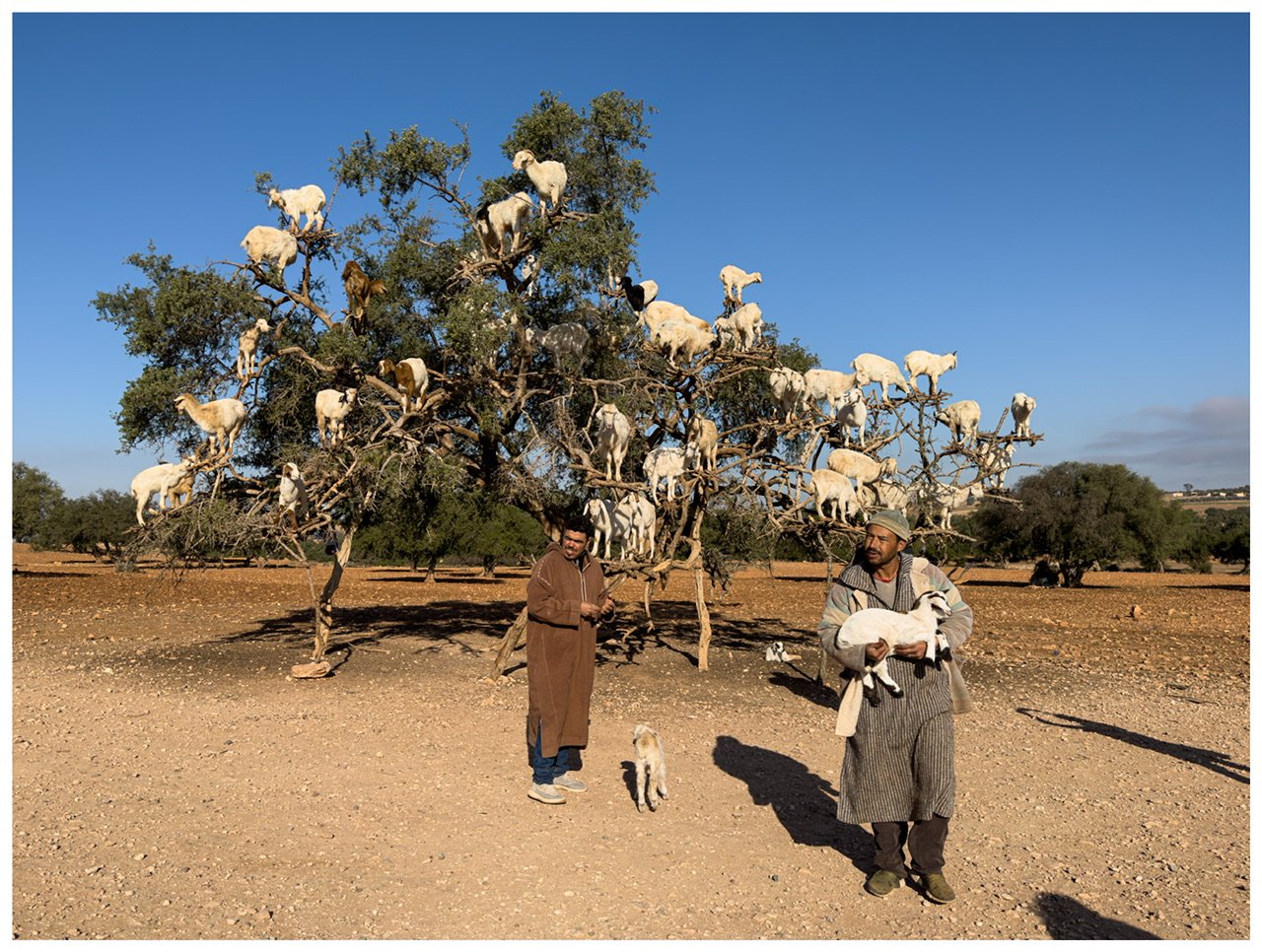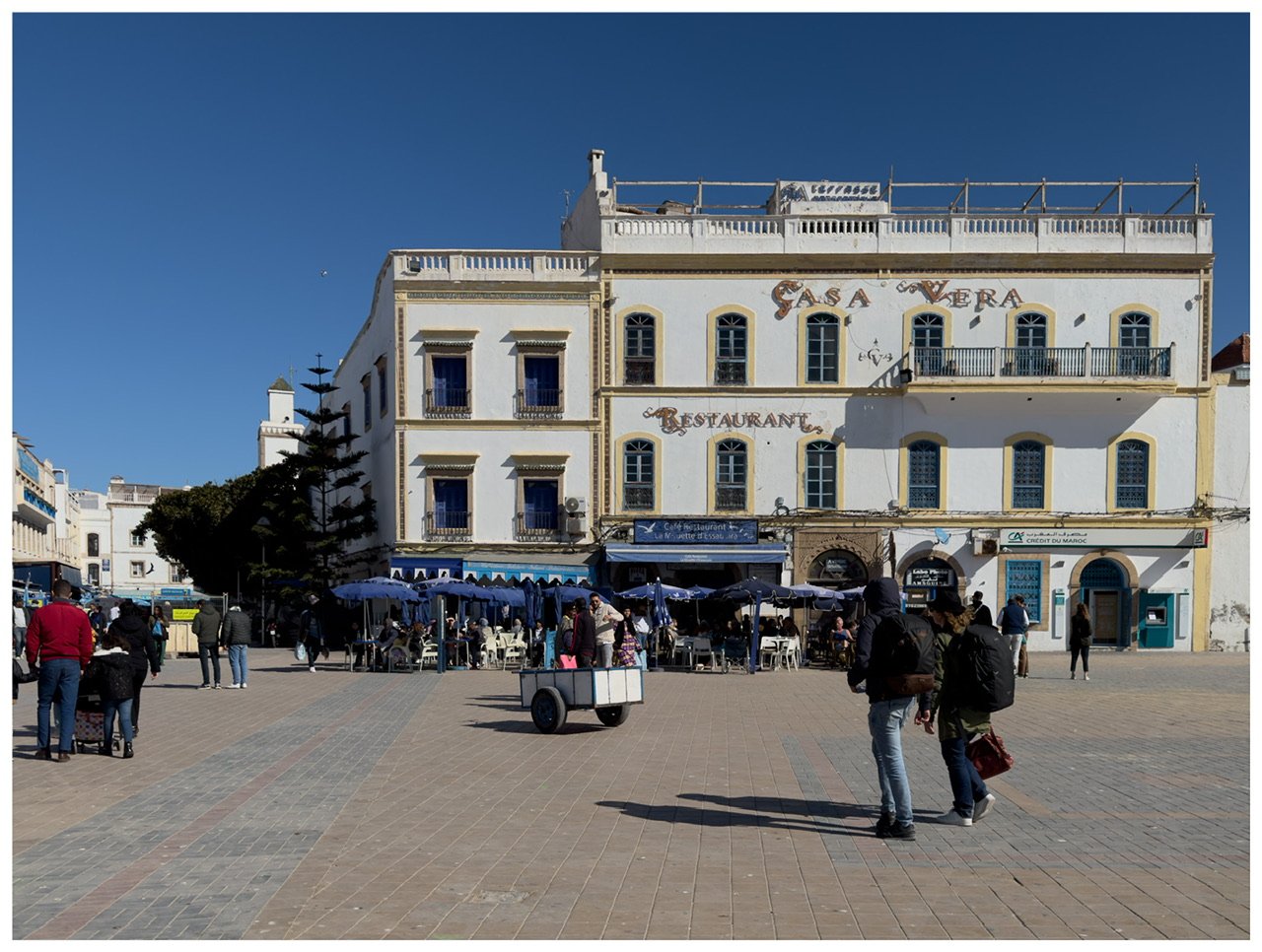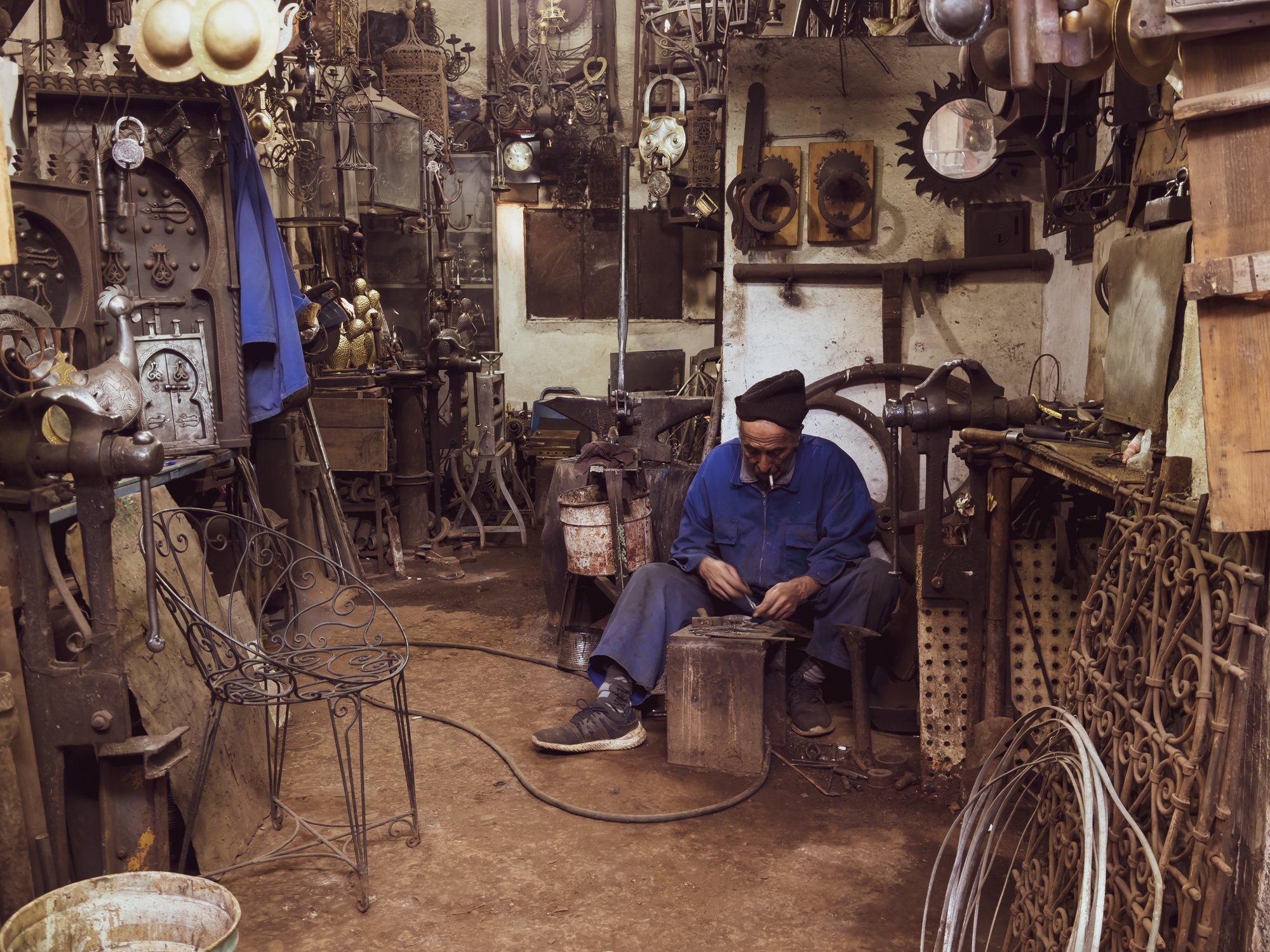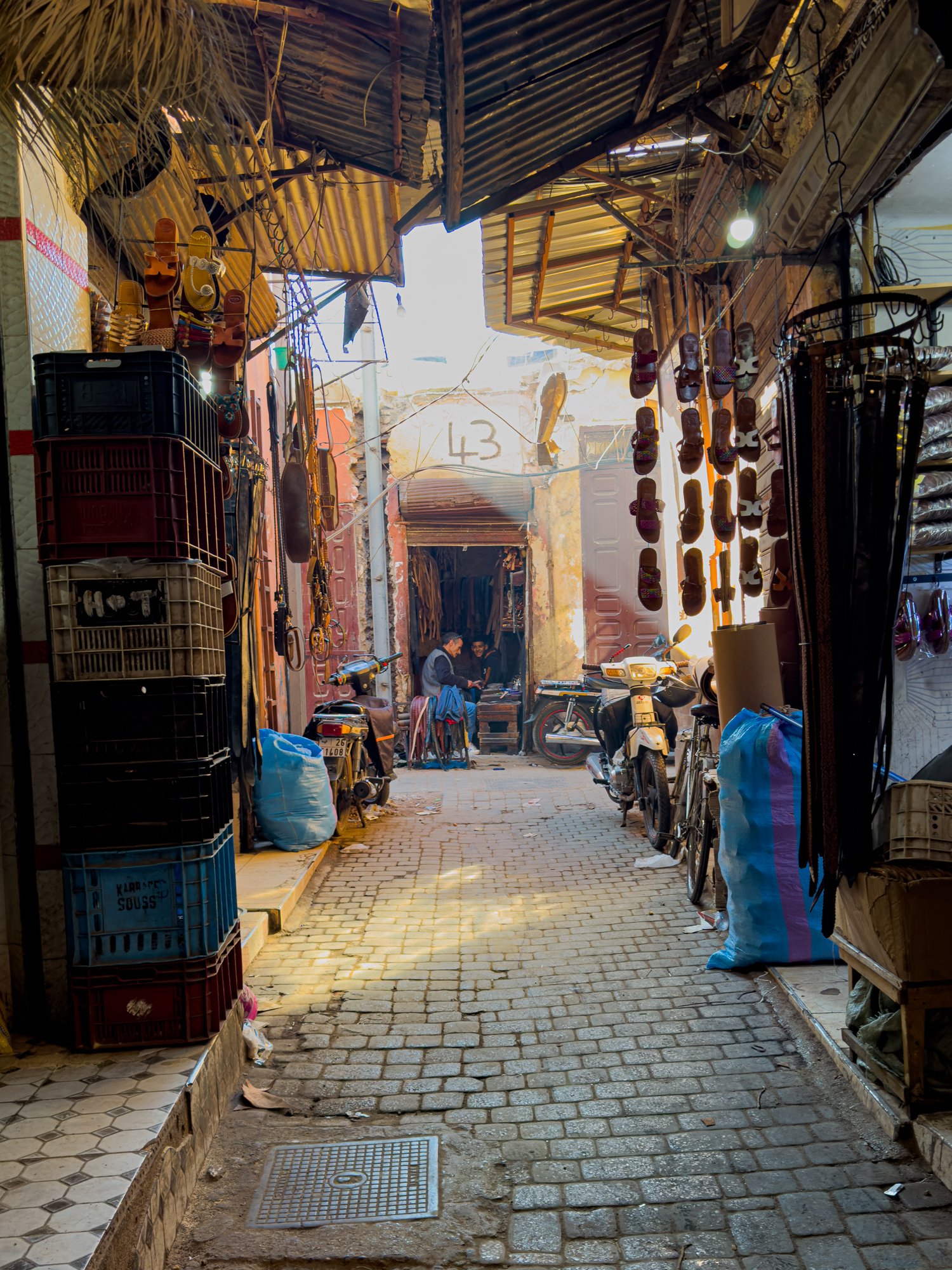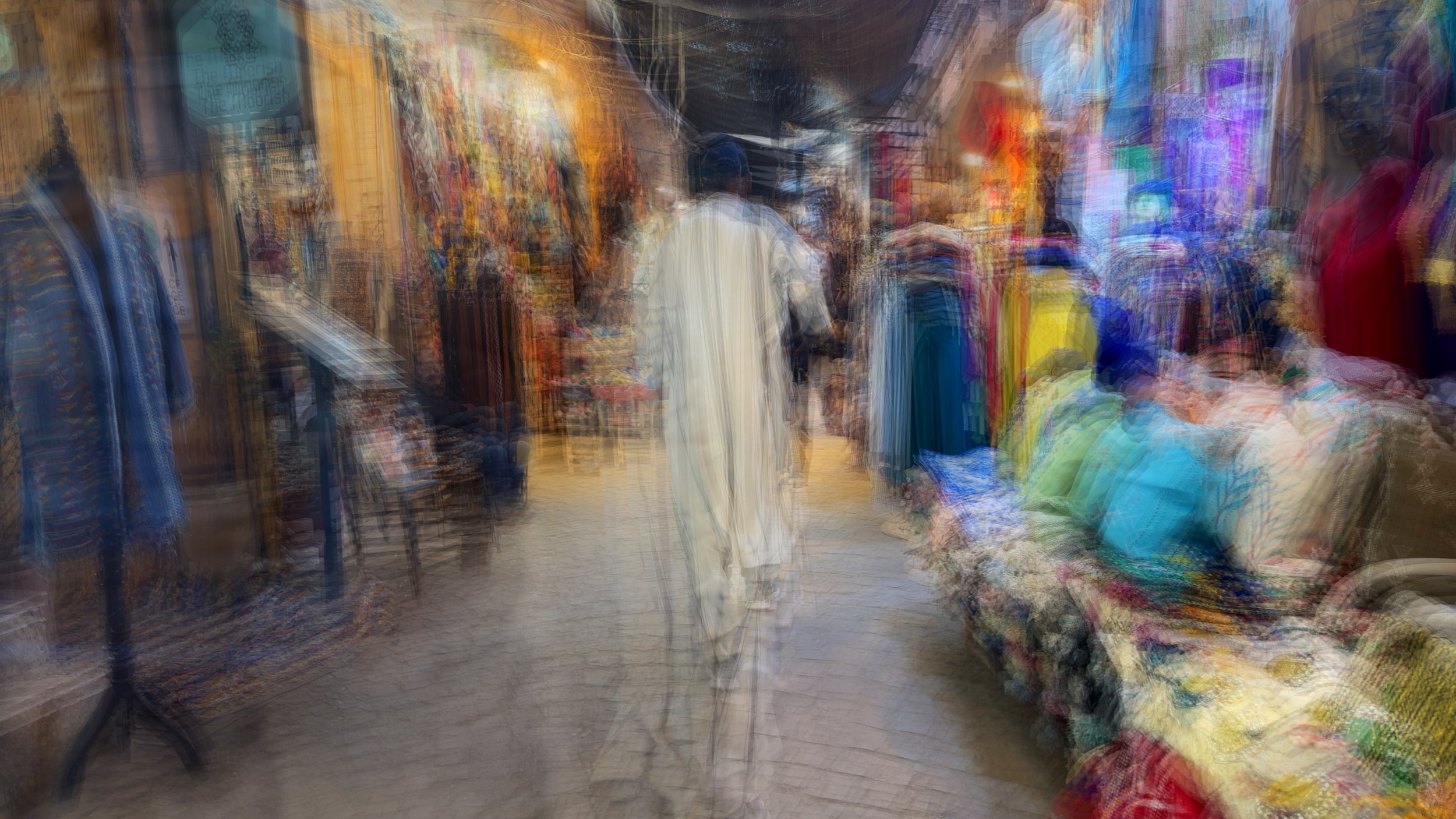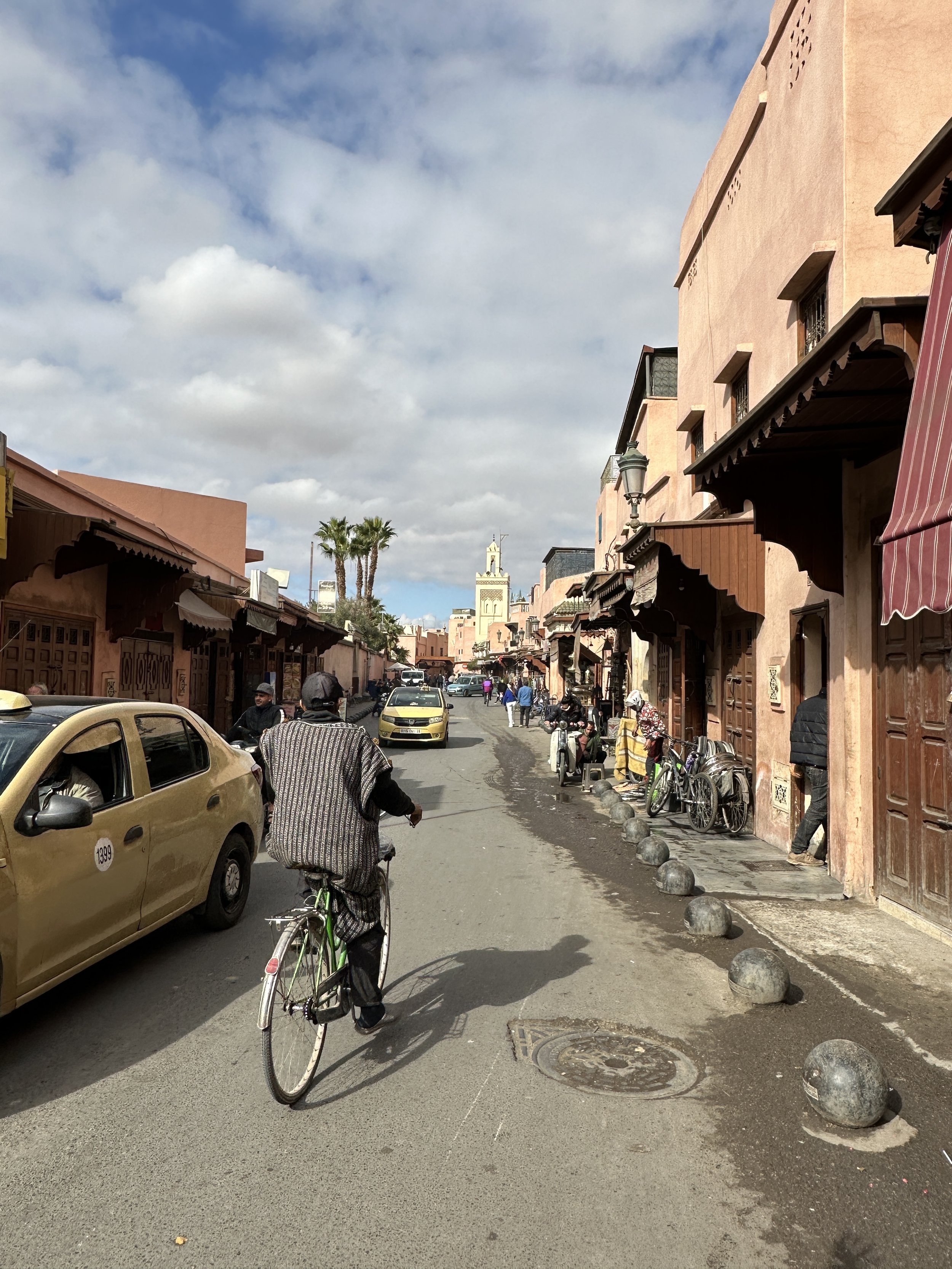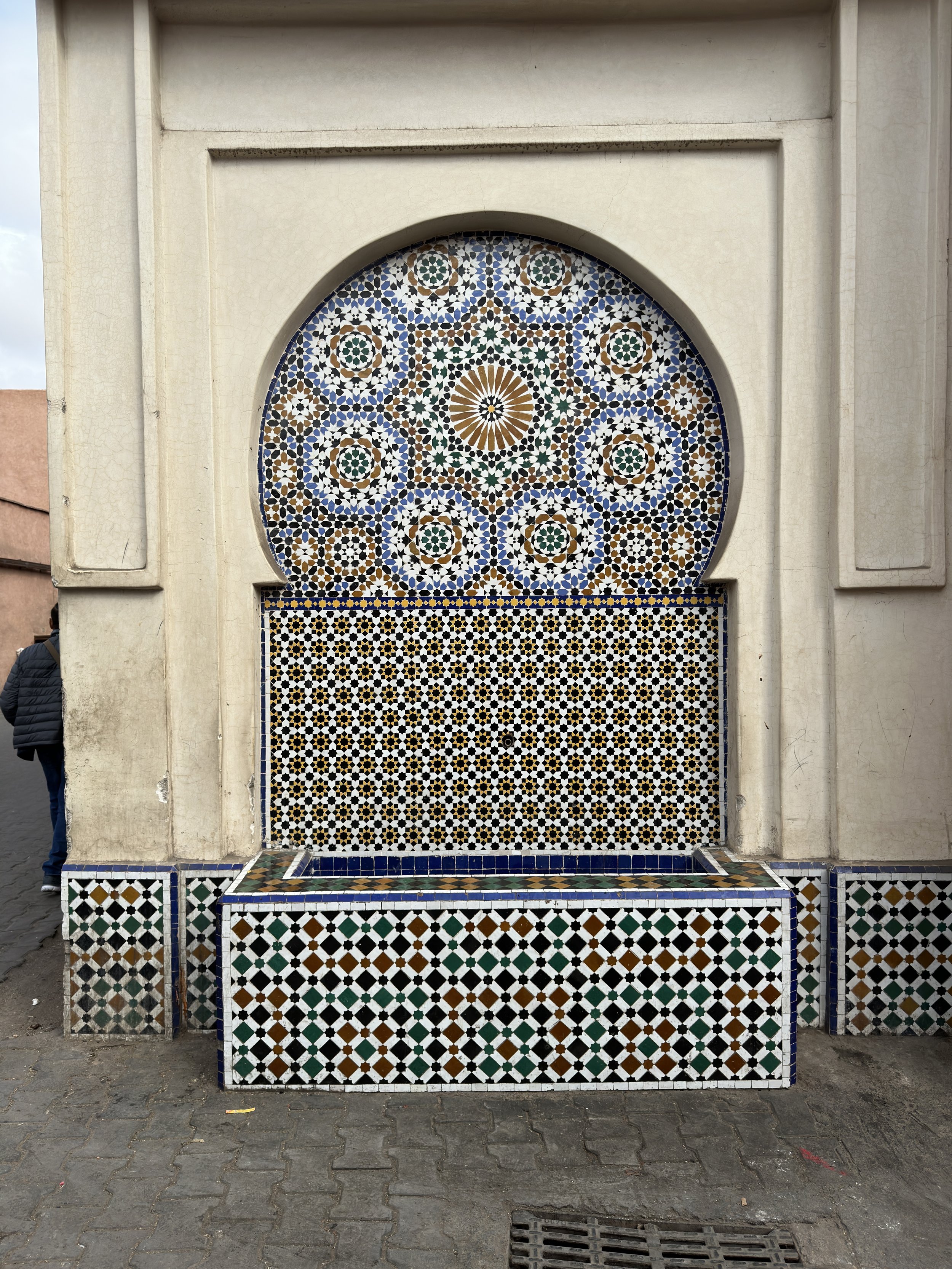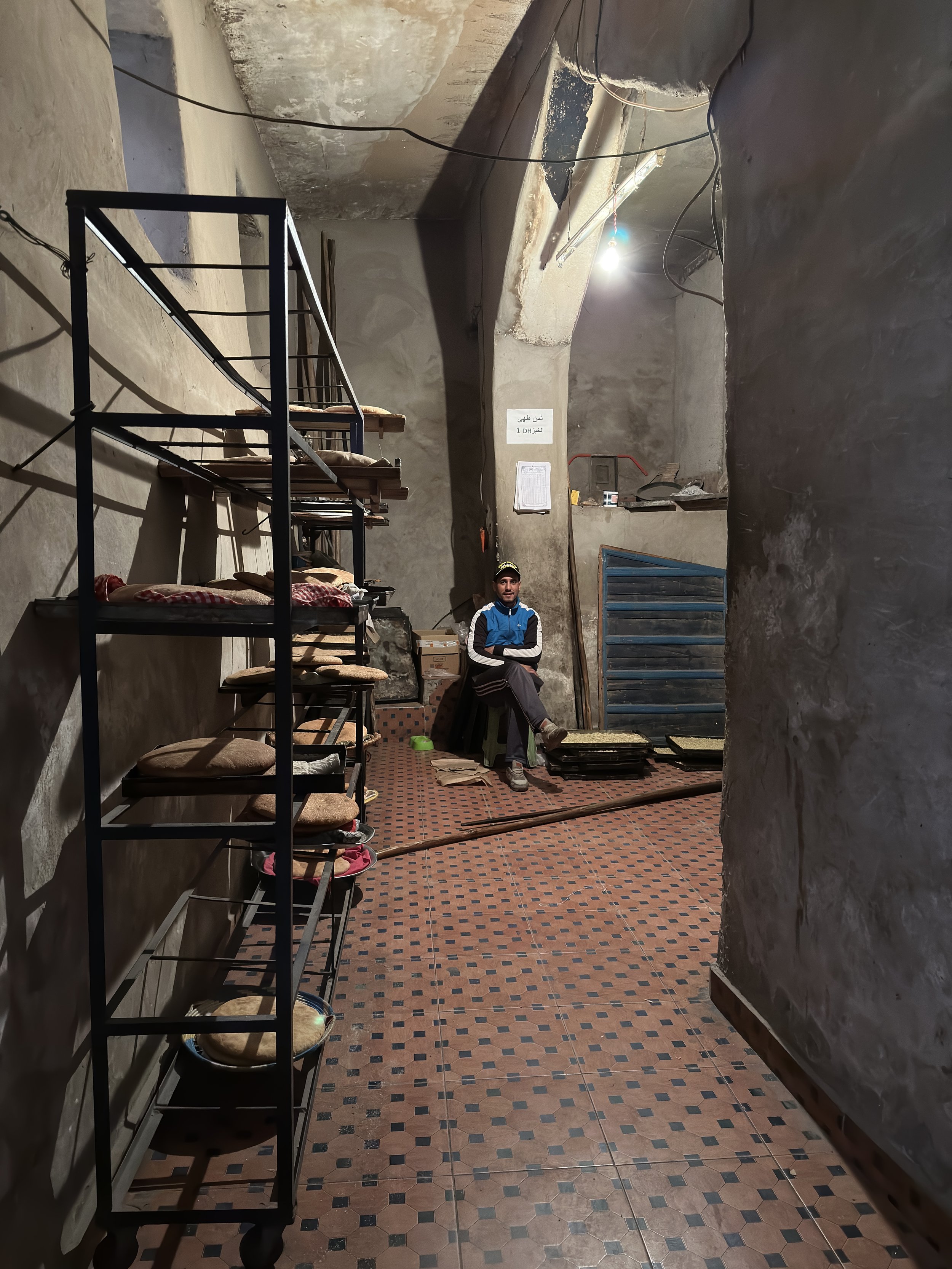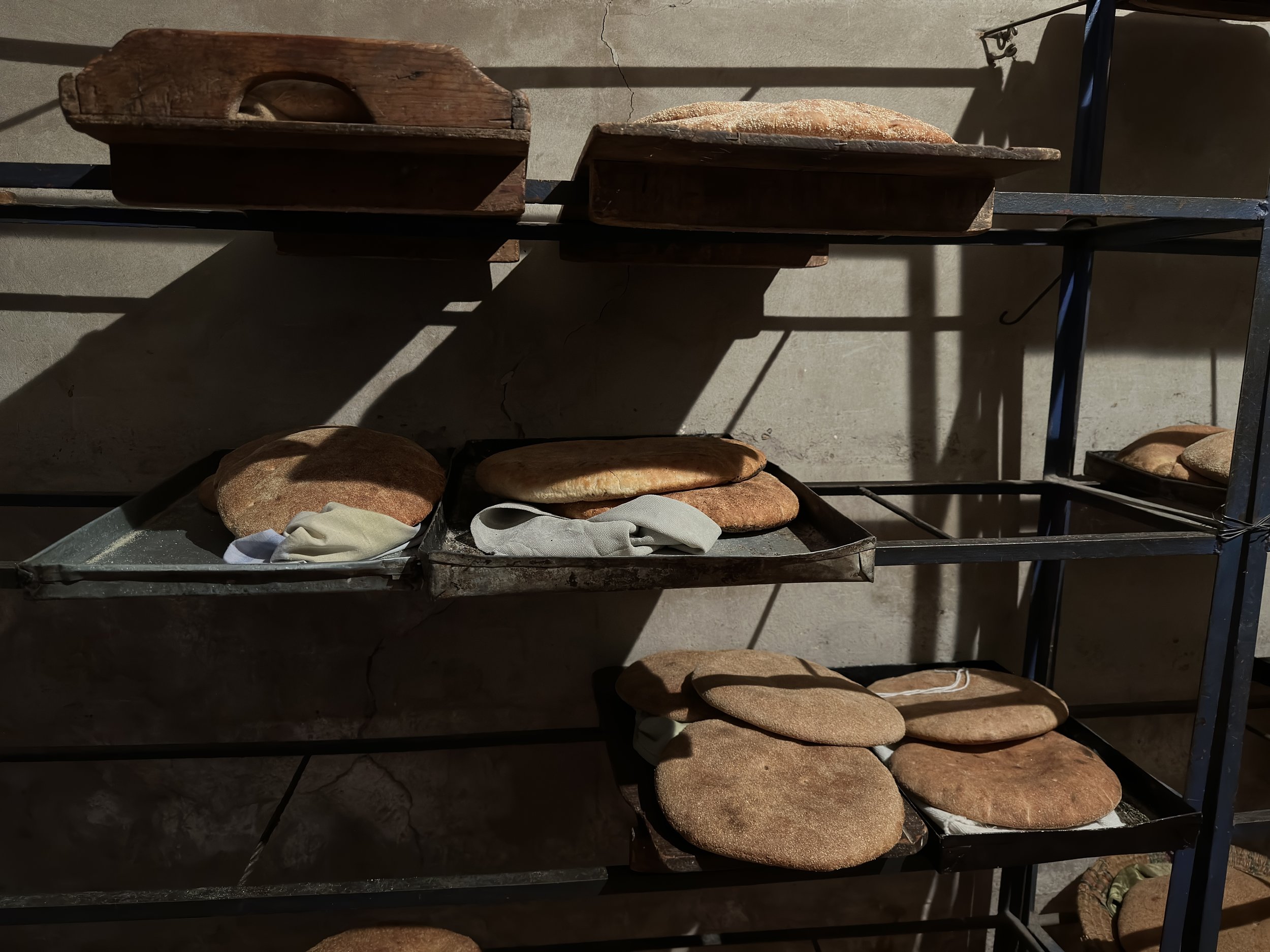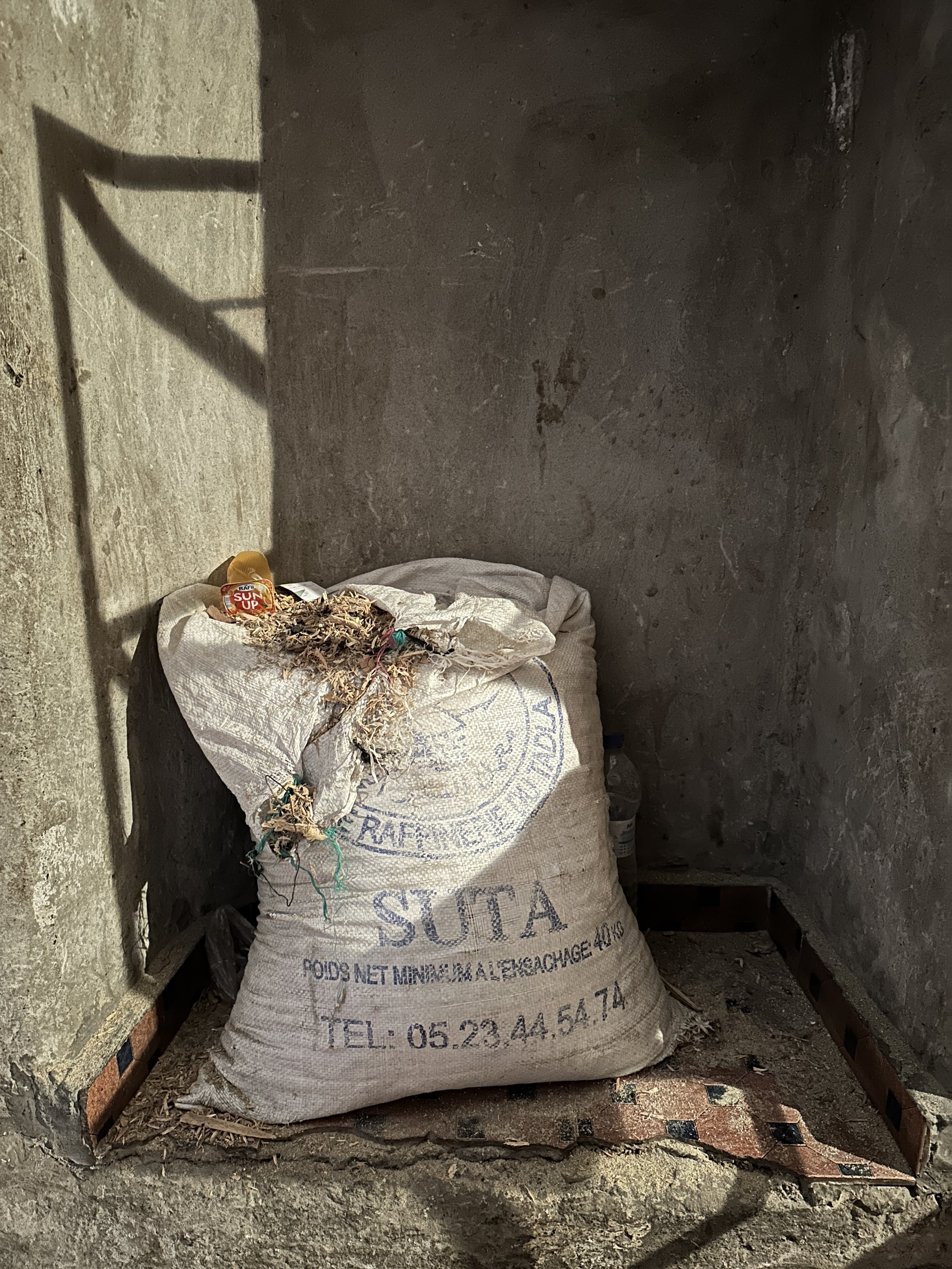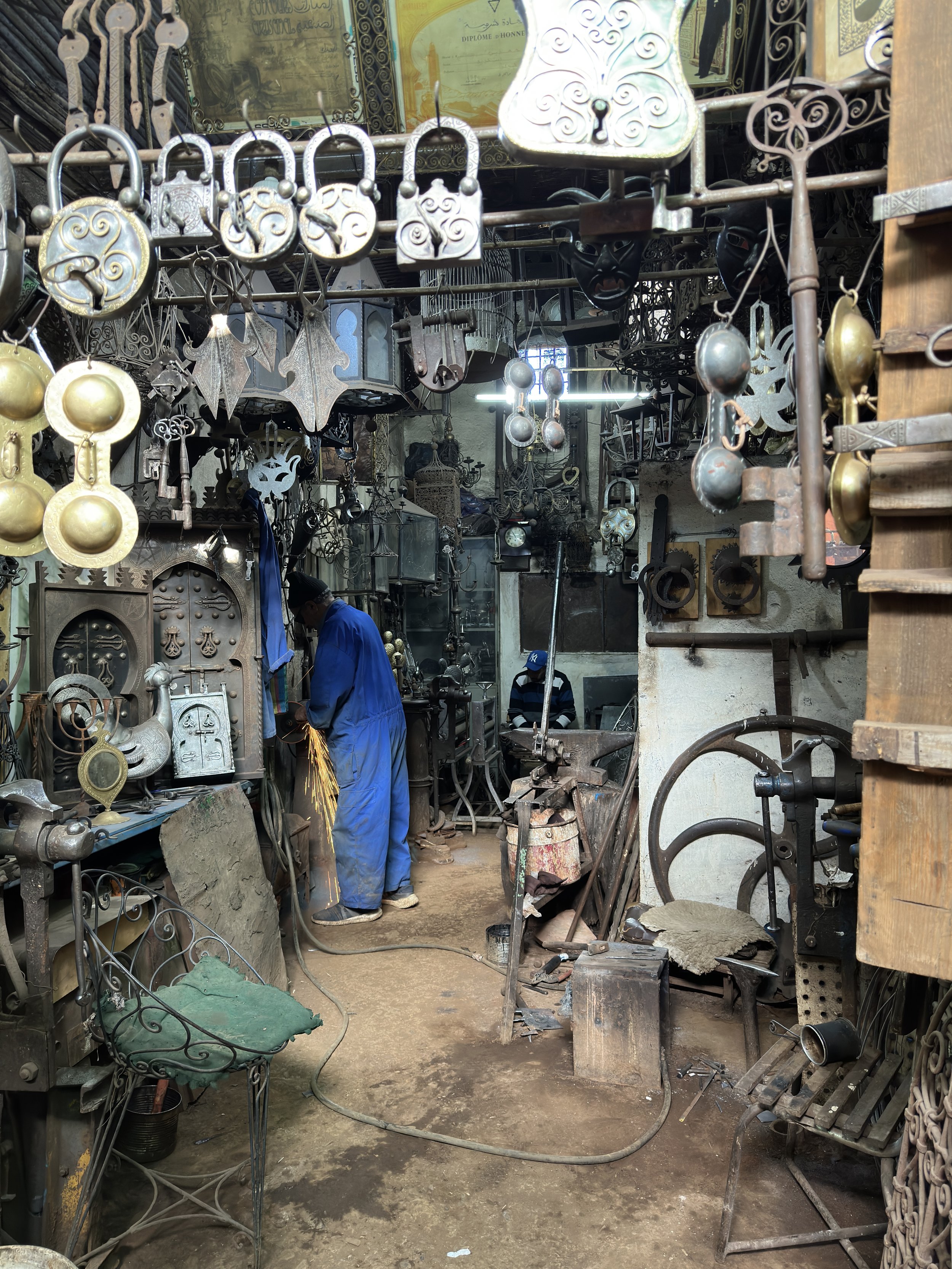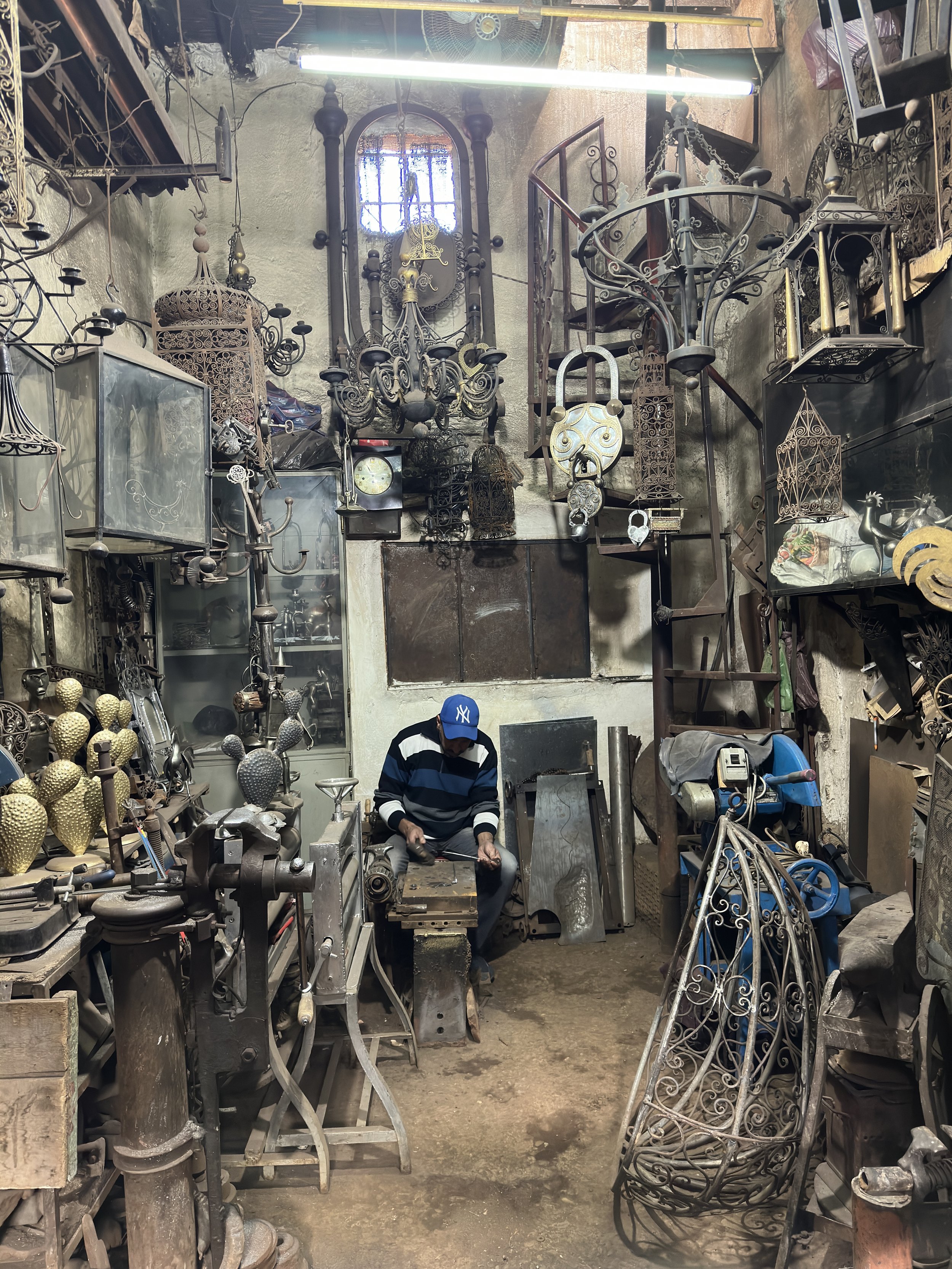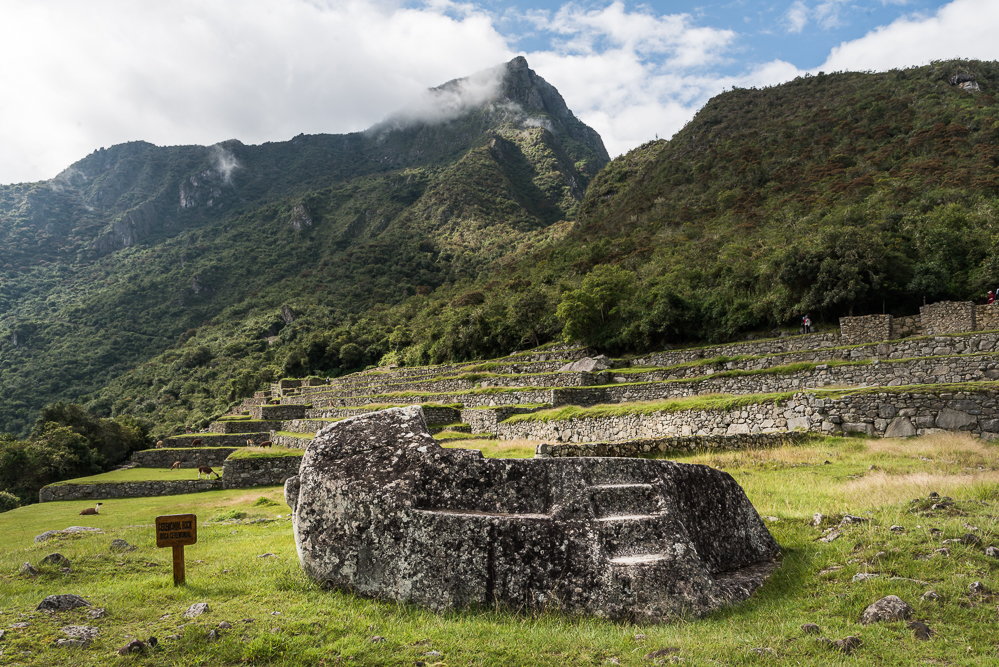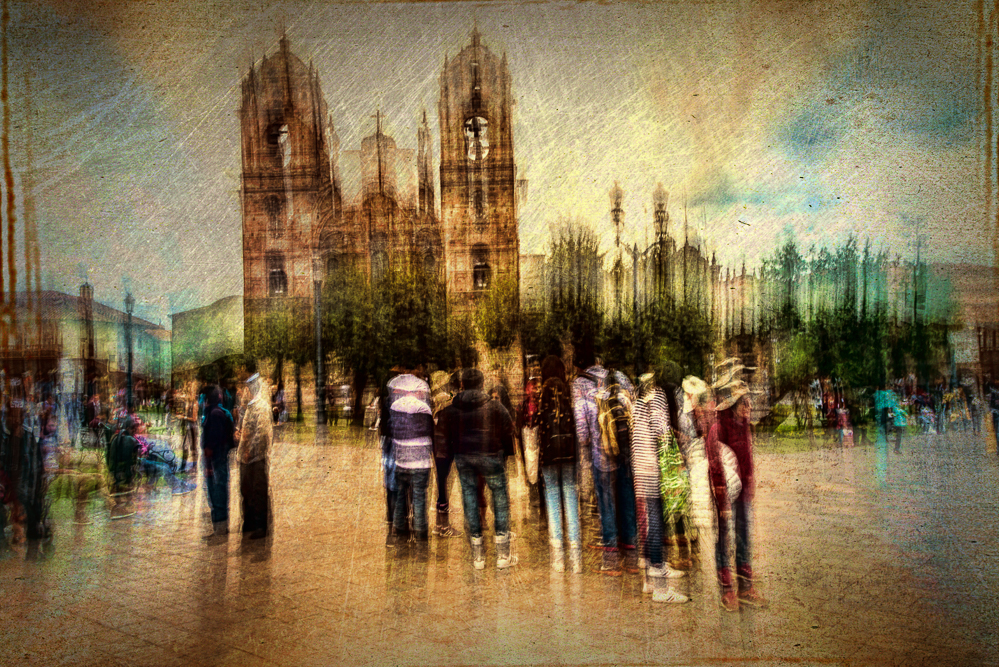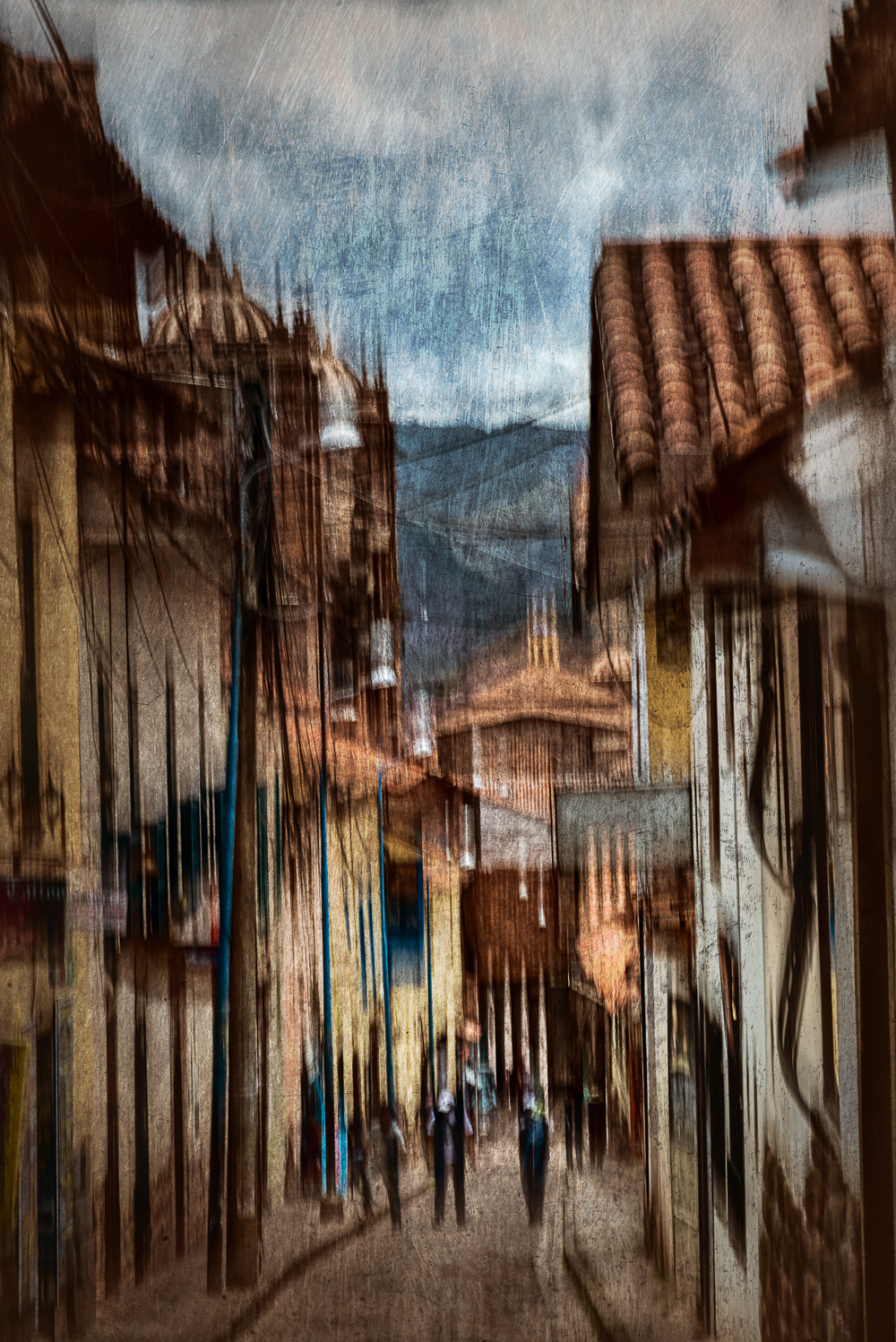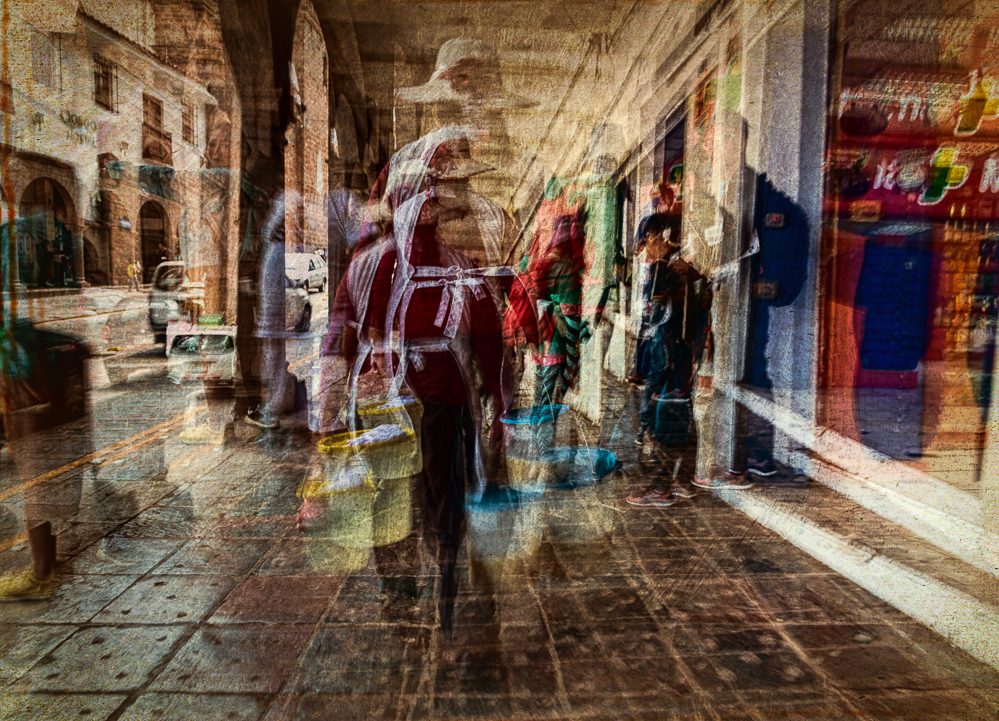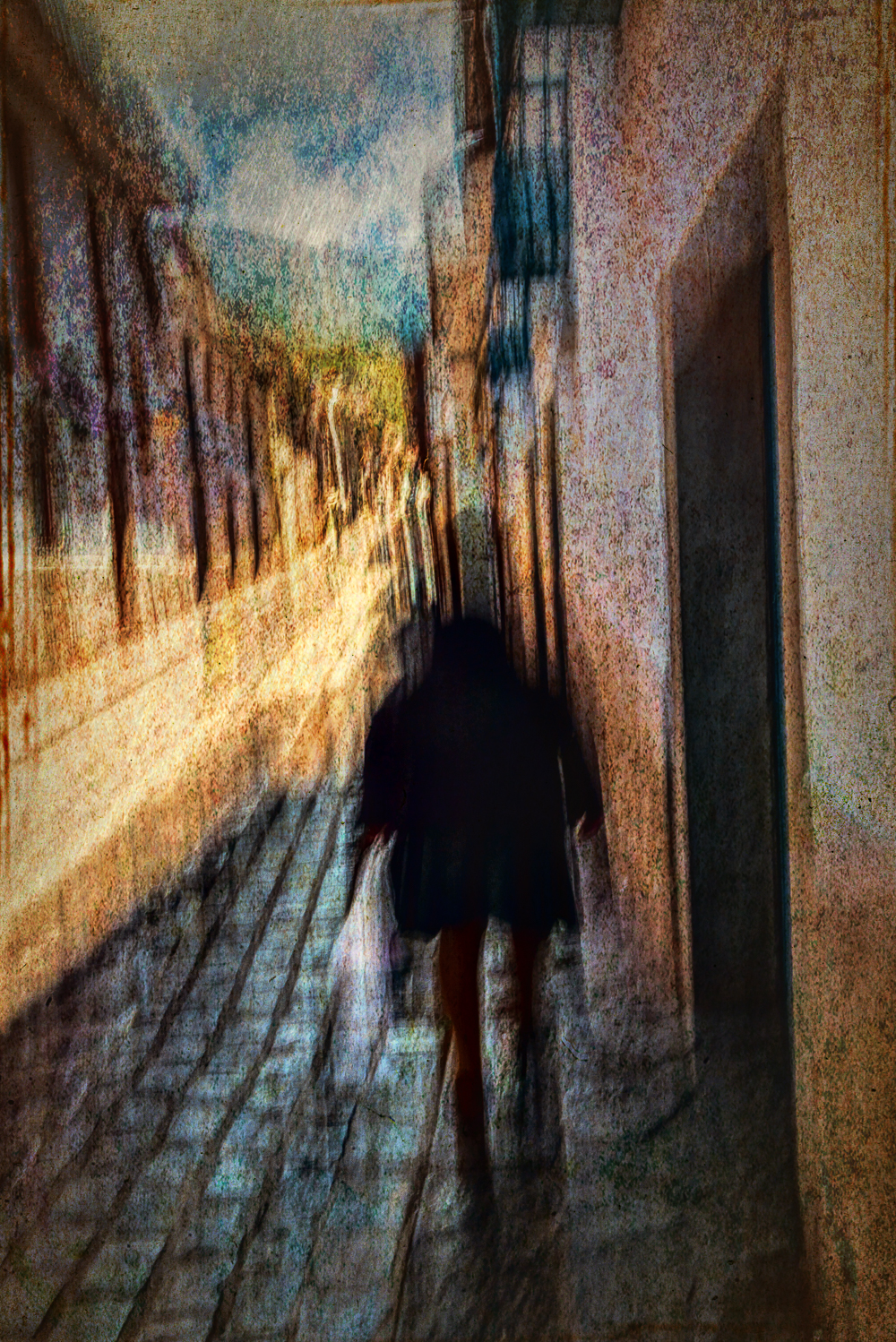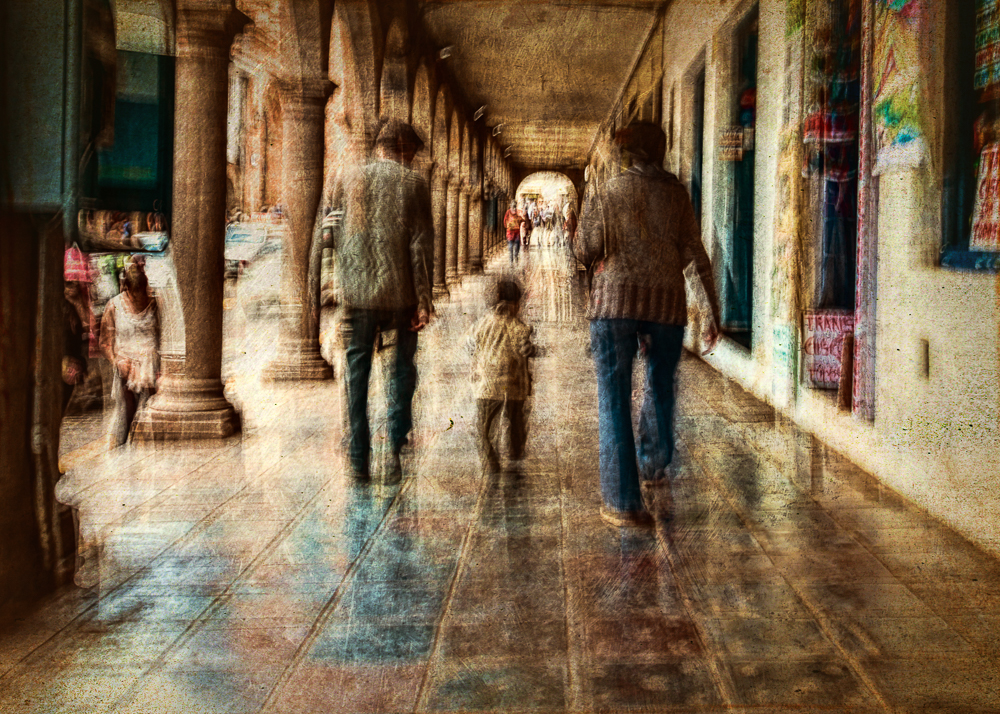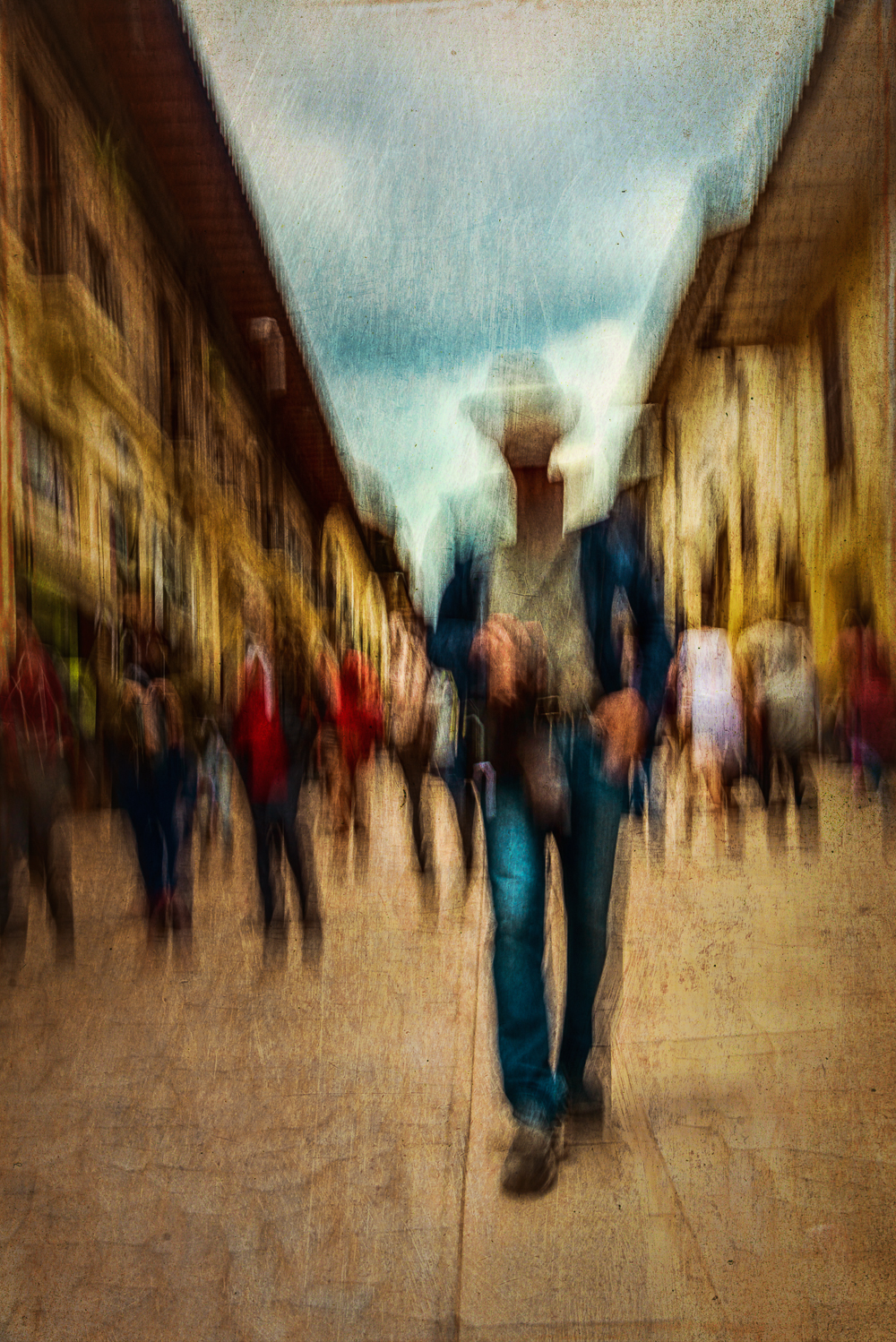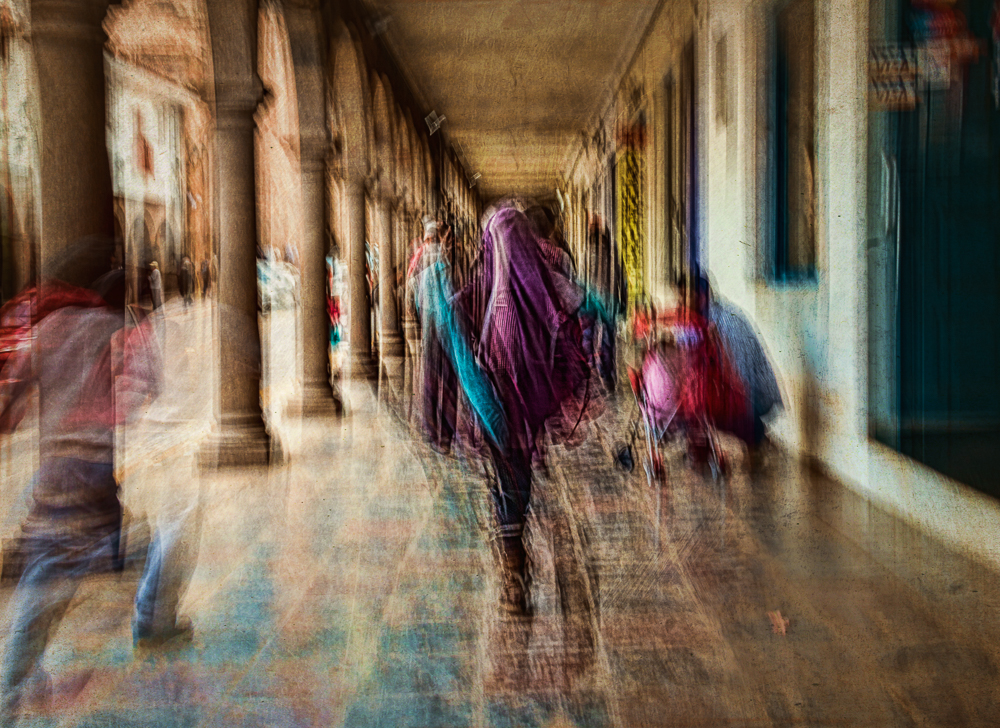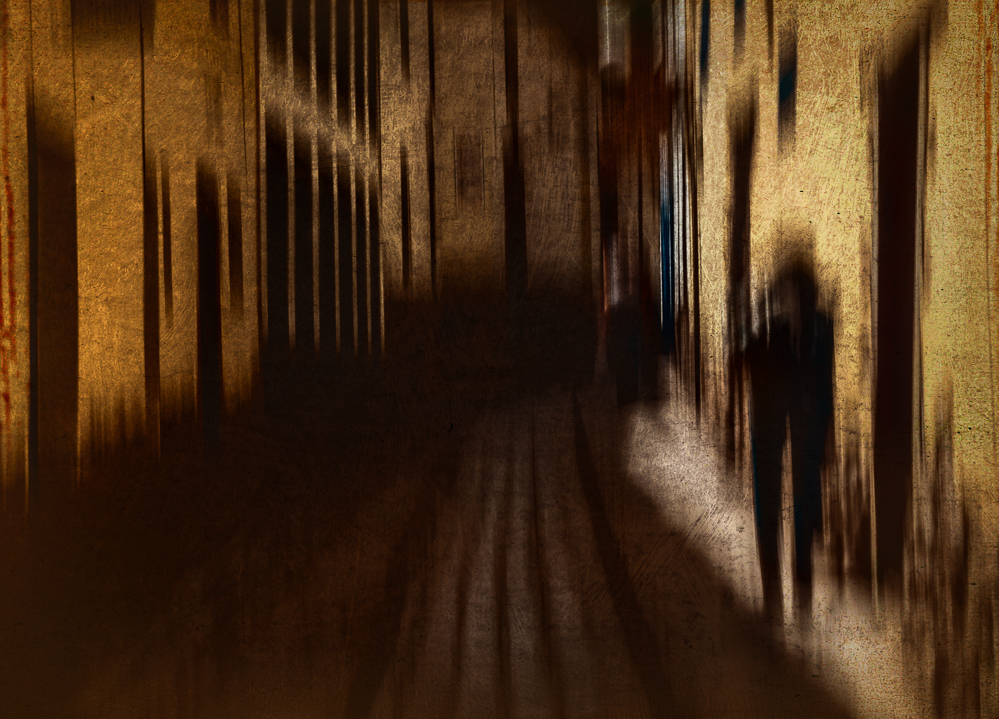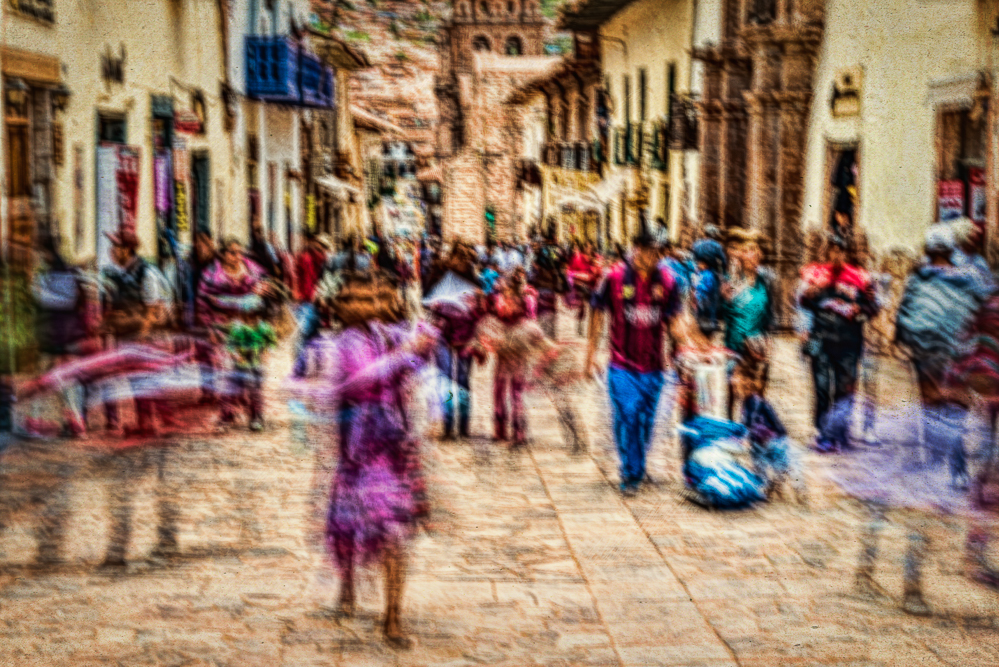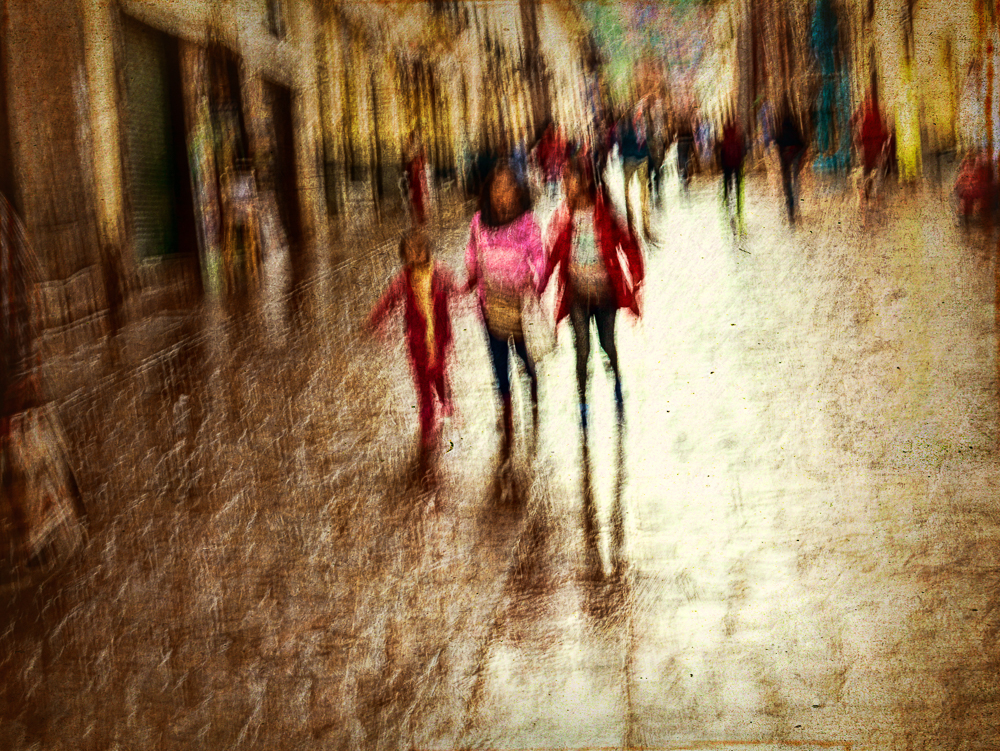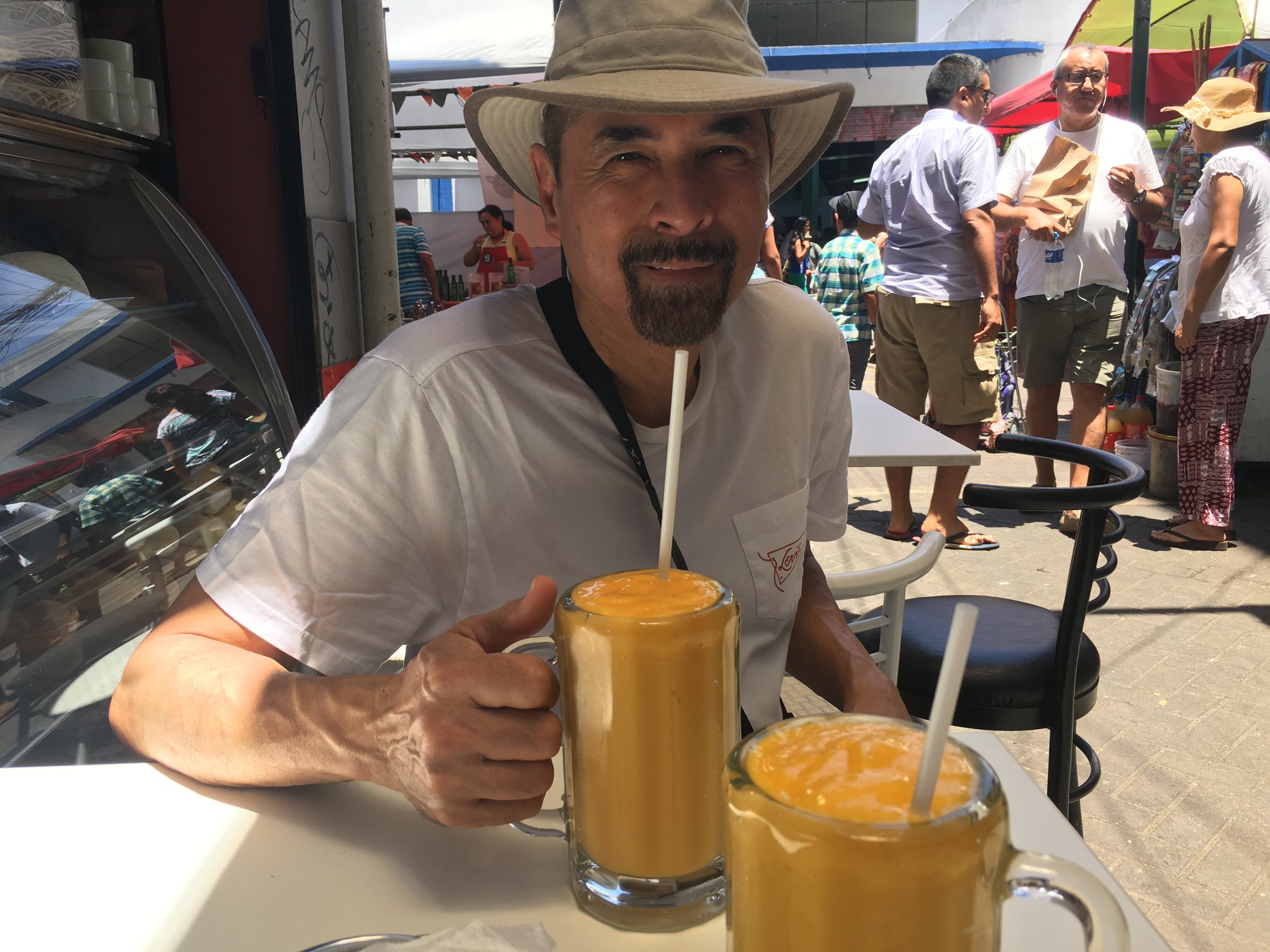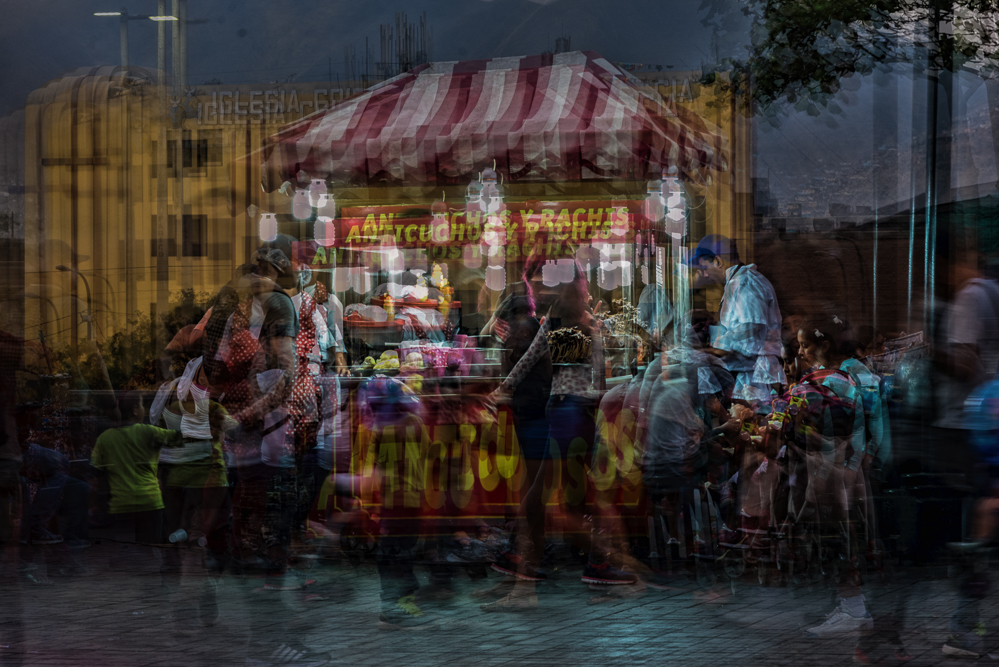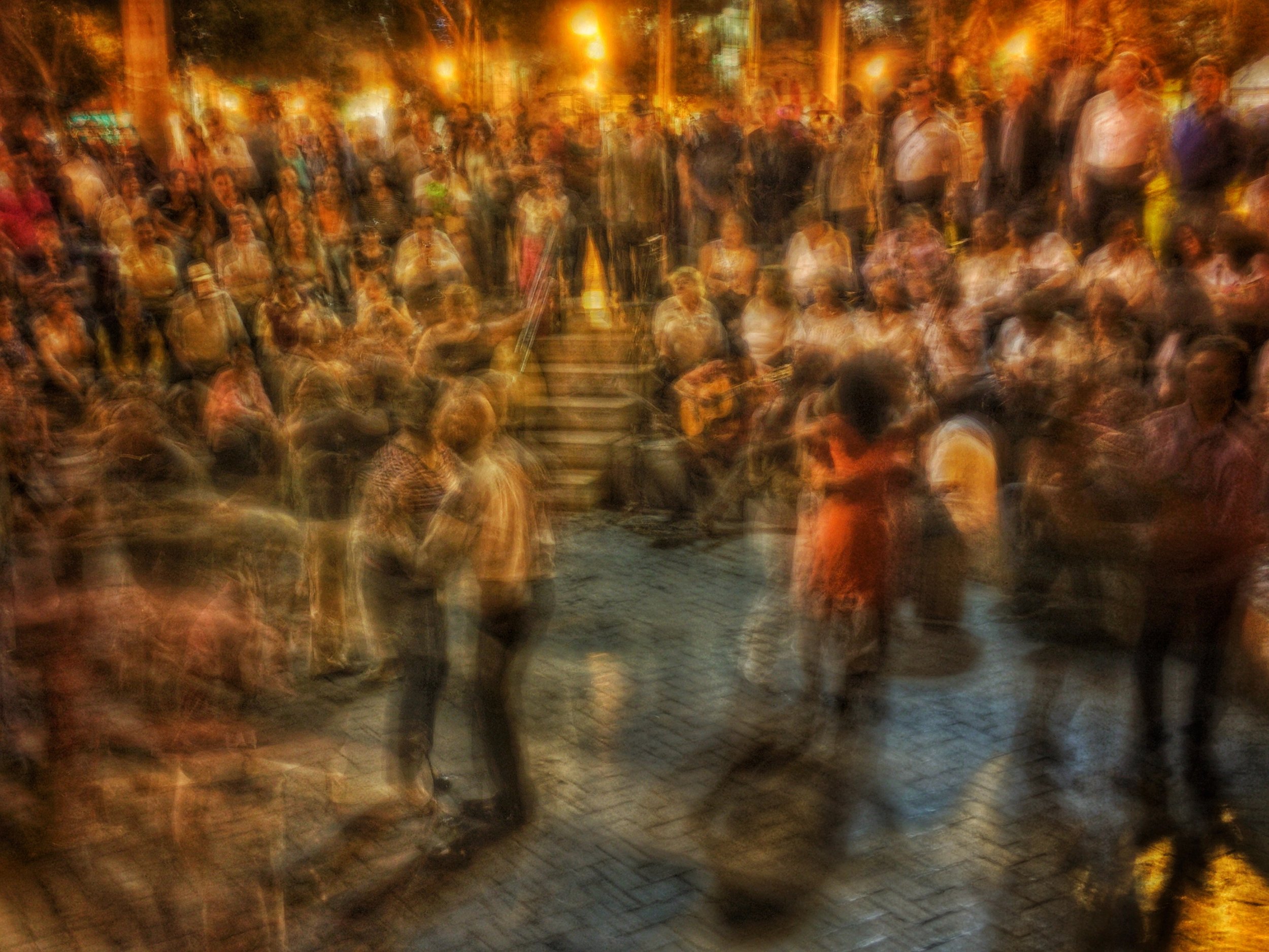We met four interesting Moroccans on the way to Fes.
Read MoreMorocco - Day 7 - Essaouira
Henry wanted to go see Essaouira - the fishing village on the coast. We booked a tour on AirBnB late Sunday, pick up at 8 am Monday! An early morning start. Not what we do best but we’ll be there.
It’s a long trip: 3 hours there, and three hours back. Add to that the few stops we make along the way: washroom break, goats-in-argan-tree, argan oil cooperative, we are left with about four hours in the town.
I had seen wonderful photographs of fishing boats floating about, sometimes with fishermen at work. But it is January, and when we turn the corner to see the harbour, there is a tangle of fishing boats sitting there, jammed one against the other. There are easily hundreds of them. It’s not scenic… It’s a visual mess. I try, and try again, to compose something even just a little satisfying, but there is no organizing this scene in anything visually pleasing. Or, at least I can’t do it.
“No fish to catch! There’s only frozen fish!” one of the men tells us as we walk by. It isn’t clear if its just that fishing is off-season, or if the ocean is been totally fished out. I’ll go for the first option. We wander around the fish market. There are still a few stands selling fish. Is that the frozen fish he was talking about? Looks fresh to me, but what do i know?
I try again to find a photograph, but I see nothing. “Relax!” I tell myself. “You’re trying too hard!” I take a breath, and I start seeing again. I find what looks like an abstract landscape on the side of one of the docked boats. I play a little, and my eyes start to open again.
We walk through the gate into the Medina - the large town square opens up in front of us. It’s windy and cold, and the place is nearly empty, only a few locals walking around. Once we get on the small streets inside the Medina, it’s much better, and when we get in a patch of sun, it’s actually warm. Here, we see a few more tourists.
We walk around. Shops, more shops, and then even more shops. I would love to photograph the displays, but the vendors don’t appreciate that all that much. I can’t blame them, really. My pretty pictures won’t pay their bills. There are many beautiful items. There are the lamps with intricate patterns cut out that throw the softest of light and the most wonderful shadows on the walls, and leather bags - every size, shape and colour, slippers, of course, carpets, big and small, from every style and tradition in Morocco. There are crystals, argan oil products, sometimes with a woman sitting in front of the store grinding the argan nuts on the mill that she winds round and round. Can’t you see how much work it takes to make this? Why won’t you buy some? Please? She seems to say.
So many wonderful things, and I can’t buy any more of it. I already have two pairs of slippers and a large bag of argan products that I will be taking home. My suitcase can’t hold any more. And as beautiful as these things are, I wouldn’t know what to do with them once I got them home. I don’t need any of it. I’m at an age when I am looking to divest myself of stuff, not get more.
So, I walk by. I don’t make eye contact with the vendors. Once I engage, they will try their best to sell me something. That’s their job, their livelihood. And I will do my best to say “no, thank you” and walk away. It doesn’t feel great. I wish I could buy a whole lot of it. Make someone’s day. Have them go home happy, smiling, because they made such a great sale today.
I find a few more things to photograph - an beautiful old door, a few alleyways, and a wonderful pattern of light and shadow. It will do. I’m happy with that.
We find a place for lunch - Chez Youssef - an obscure little place that is highly recommended on Trip Advisor. We make our way up two flights of uneven stairs. I am thinking: did I get the right place? This got 4.5 stars and a Trip Advisor Choice 2022? I must have got it wrong.
We finally find ourselves on a tiny little terrace where three tables have been crammed in. Two are already occupied. We sit. I check on my phone - do the pics online look like this?… one of the reviews mentions great live entertainment at night? But where would they fit that in? I check the pictures on Trip Advisor again - yup! This is the place!?! Okay!
The place is run by a middle-aged man, I’m guessing he is Youssef. A young girl - perhaps 8 or 9 years old is helping serve the meals. I’m guessing she is probably his daughter. She brings our cutlery. The table next to us clears out and another group fills the space right away. The man comes up and takes our order, and then theirs. We order another meal of tajine. It comes with fries. We wait a while and we see him coming up with our meal. The little girl is coming up behind him, carrying the plate of fries. It’s obvious she does this all the time. But this time, her foot seems to catch on the top step - she trips and the fries go flying everywhere. Instantly, the look on her face as she glances up at him, and then at the fries on the floor, and then at him again, her expression, a mix of shame and fear and disappointment in herself. Every one of the customers makes some sort of gesture or sound meant to reassure the sweet girl. I try to catch her eye to signal her that it’s okay. No worries.
The man sounds irritated, but not mad. He says something in Arabic. It sounds like he’s just telling her to go back downstairs - that he’ll clean it up.
I wish I could help her. I think of my grand-daughter who is about her age.
She comes up later with another plate of fries. I smile at her and say my trite little “Chokram bzef” (thank you very much}. She smiles back.
We finish our lunch and we have just enough time to find the Game of Thrones location we heard about. Fortunately, it’s very close by and we find it easily and, of course, take a few photographs, then we head back to take the bus for our three hour ride back to Marrakech.
Many people said we should not miss Essaouira. I am glad we went, but it isn’t fair for me to say whether it is a good place to visit or not. I think that, a little later in the season, when it is warmer, when the fishing boats have fishermen, before the throngs of tourists arrive, I think it would be a lovely city to visit - but you definitely need more than four hours!
Now, for the bus ride back…
I didn’t take a photograph of that little girl, but I can still see her face. I wonder how she is now.
Marrakech - Day 4 - To photograph or not to photograph
On Saturday, we went out with Youssef again, to tour the Medina. This time, Henry had asked him specifically to help him approach people and ask them if they would agree to be photographed. We set out early afternoon, when people were still milling about.
First, Youssef suggested we go to the flea market. It was just outside the Medina, and we would find many interesting people there. They would also be more likely to agree to pose for a quick portrait, for a small amount of money. This is a significant shift to Henry’s approach. He always approaches people directly, and never offers money in return. But it is important to adapt to each place and culture. We will see if this works.
At the flea market, Youssef walks ahead of us and scans the aisles for likely subjects. By now, he has an idea of the type of people Henry is interested in. He spots someone and walks back to us: “What do you think of the man over there?”, he asks. Henry nods. Youssef signals us to hang back. He walks over to him, salutes him politely and asks for a photograph. A quizzical look at us, and then a smile at him, and then he nods in agreement. Youssef signals Henry to come over. I hang back.
The portrait is quick. Henry squats down to get at just the right height, gets the man to look at him, and he takes a few photos. There is no time, and likely no tolerance for shifting position, changing much of the background, no fussing. As long as the person is away from bright sunshine, Henry has to just go for it. He will only know if it is successful once we get back and look at it closely on the computer screen.
We continue like this for a while. Henry spots one man, a carpet seller. Youssef asks him and he is reluctant, he seems shy, perhaps. A younger man comes by and nods encouragingly at him. “Yes! Yes! Why not”!!” He agrees. Two or three frames… and he says something as he laughs. Youssef relates: “He says he wants to go back to Canada with you. He will watch your house and take care of it for you!” The man is laughing with us now.
And we continue like this for the afternoon. Soon, we get back into the Medina through one of the arched doorways. Youssef knows what he is looking for as he scans the place. We go back through the alleys, and Henry gets to make several more portraits. “I will take you to the hammam, in my old neighbourhood. The man there who heats up the oven will be very good to photograph. You’ll see!” Eventually we get there. Inside, Youssef greets his friend, and introduces us to Mohammed.“
I know Henry and I are both thinking the same thing:
There is absolutely no light in here! The place is nearly pitch black!!!
Mohammed is a tall black man in traditional clothing, he is wearing a head scarf - a handsome man for a portrait for sure! If we could only get a few photons of light to throw around in here…
There is a rough area dug about ten feet deep, with the oven on one side. Mohammed sits on the ground and throws straw in the fire. Youssef explains: “He does this from 6 am to 11 pm - seven days a week. Sometimes he has some young boys take over to take a break. He gets fifteen days of vacation in the year, when he can go see his family in the south of Morocco.“ Henry takes a few photographs of Mohammed by the fire. I pull out my iPhone and make a few as well. Then he climbs back up to ground level.
“He will play music for us”, Youssef says. “To make his day easier, whenever he can, he plays his sentir, a traditional Berber instrument that ressembles a guitar, and he sings.“
Henry makes Mohammed’s portrait and I take a few more frames. “Choukran bzaf” - thank you very much - we try to convey our appreciation. Perhaps this was a nice break for him too, to have someone come and listen to him play and sing. At least I hope it was.
Onward we go - a few more portraits. We come to an open square. Henry spots a man and signals Youssef. A quick chat - he agrees. They always seem a bit puzzled. There is no shade here, so I hold my jacket up to shield his face. Henry takes a few frames, thanks him, and gives him a 20 dirham note. Now, the man sitting a few feet away calls out to Youssef. “He wants you to take his photo too too!” I suppose if you get a little something, why not? Right? So a second portrait on this plaza, and then a third…
We wind our way back to the Jamaa el Fna Square. As we walk, I ask Youssef. “I read somewhere that the resistance to being photographed might come because they believe it is forbidden by Islam. Is that correct?”
I know, of course, that there is not a single simple answer. There never is. But Youssef explains a little more. “You see, in Islam, we are forbidden to adorn our walls with any representation of a person. That is why we decorate our walls with such patterns and details. We would never put a portrait on a wall in your home. So the notion of having their photograph taken is difficult for them to understand. And also, they wonder why you would want to have a photograph of them, sometimes even they might wonder what you might want to do with it, be suspicious of it.”
I am beginning to see, even just a little, how it would be strange, invasive, even, for someone to raise their camera and aim it at you, especially in this culture. This has always been a struggle for me, when we travel. I like to make photographs of the people, but I also feel a strong ambivalence.
Henry prefers to do street portraiture. With this style, he always approaches the person first, and asks, whether in a few local phrases he has learned or even just by gesturing to his camera and the person. He always goes fairly close to the person, and asks them to look directly in the camera. The portraits he makes are very powerful and very respectful of the person.
In street photography, the idea is to capture a scene as it happens, without interfering with it - a moment in time. That is what I prefer to do. However, when we travel, I always get a feeling of inequality. We typically travel to countries that are less prosperous than home. As we explore places, I am acutely aware that I am a privileged foreigner, walking around with expensive gear, often worth more than average people would make in a week, a month, even in a year. If I were in their place… how would I feel?
And so, I do make photographs, but I try my best to follow my intuition. If it feels right, I will, but I leave a lot of images behind, doing my best to remember the place, the colours, the textures, the people. I am always aware that I am an outsider, and that as much as I walk through their towns, their streets, try their food, listen to their music, I will never really know what their lives are like. There is always some distance, and that is just how it is.
We get back to the square and Youssef invites us for tea and Moroccan pastries. We sit and chat for a long time, about what life is like here, what it was like during Covid, how traditions are changing and how youths are living in modern ways.
It is already dark when we say good bye. We feel like we know each other better. It’s been another great day in Marrakech.
Marrakech - Day 3 - Venturing out on our own
After the guided tour yesterday, we thought we would try going around the Medina on our own today. We left a little later this afternoon and planned to be out until early evening. We found our way to the same place. We started the tour yesterday, and wandered through the streets and alleys. We walked for quite a while, wandering as we pleased, and eventually managed to find our way to the Jamaa el Fna Square.
We started slowly, taking our time and being careful not to be too obvious. Still, it was obvious that people were aware of us, almost watching to be sure they wouldn’t be caught in our frame. Even with my phone, I could feel people were suspicious. I managed to get a few images, but I had to be quick. My compositions suffered, with much of my attention diverted on managing this new challenge.
Henry is always a little bolder than I. “If they ask me to leave, then I’ll just leave.” I am not willing to risk that, so I am much more conservative with how many photographs I take. I hesitate much more than he does. So, I focus on other subjects - on the environment.
The people’s reluctance was remarkable. In most every country we have visited, he always makes portraits of regular people on the street. He always asks them first, in the kindest, most considerate way. He’s been doing it for nearly twelve years now, and I have always admired the way he is able to connect with someone, even when there is no shared language. It has been a very rare occurrence for someone to refuse him. Today, he asked three men, and in each instance, they refused. The way they shook their head “No! No!”, often accompanied with a hand waving him away, that belies a deep emotional reaction to his request. They were not rude, but they were clearly irritated, perhaps even offended by the request. I am curious and wish I could understand where it comes from. Not to debate it, or to convince them otherwise. I am just really intrigued about this aspect of the Moroccan culture. A little research suggests that many people believe it is forbidden by Islam. I guess that would explain a lot!!!
On Saturday, we have asked Youssef, the tour guide who took us around on Wednesday to take us around again, but with the specific objective of photographing. He will approach the people Henry would like photograph and we’ll see if that is more successful.
For now, I shift to my favourite way to create images - motion, blur, and all the weird things I do…
A man walks in front of me at the market.
The terrace at our restaurant offers a wonderful opportunity to play with shapes and light.
And still, today was a great day. We did get some photographs and had a great time. We ended the day with dinner at one of the terrace restaurants on the Square. It is an amazing sight, quite an experience, that square at night.
And so, I leave you tonight with a little video, to give you a taste of what it was like as we left for home.
Marrakech - Day 2 - Medina Tour
Wednesday, January 18, 2023: Today, we hire a tour guide to take us around the Medina. Our host, Zakaria, made the arrangement, and he picked just the right person. Youssef meets us at the house, and tells us he would like to take is in the “every day” Marrakech, rather than the usual touristy areas. We are definitely up for that!
We start just near our AirBnB - just one street over, and we are already in the heart of the old Marrakech. Over the next several hours, we follow Youssef through several neighbourhood. The medina is surround by fortification walls and he explains that, prior to the French occupation, which lasted from 1912 to 1956, the city of Marrakech was mostly contained within these walls. The area contained within the walls is 700 hectares, or 7 square kilometres. The development of the city outside the walls was done by the French, during the protectorate.
Each neighbourhood must have five basic elements: a mosque, a hammam (public bathing house), a school, a bakery, and a market. Most of the people who still live in the medina have inherited their house from their family. As tourism increased, many foreigners purchased properties and transformed them in riads, a type of boutique hotel that you can now find in the most obscure corners of the medina. Property prices rose so much that locals are now unable to buy property there and have to move to the city’s outskirts.
Youssef tells us that, when he got married, his wife was happy enough to live with his family, in the medina, but when their first child was born, she insisted they move to their own place. They had to buy near the airport, as this is what they could afford. Youssef misses living here and his love of the place is evident as he walks confidently around obscure corners and greets and is greeted back by people he knows.
He takes us to see artisans of various trades. First, a traditional bakery. Here, the neighbourhood families bring bread and pastries that they make themselves to be baked in the traditional oven. See those coloured cloths under the bread? They remind the baker of which bread is whose. Two young girls come in and ask for their bread. One of them picks up one of the wooden boards on the shelves, with a few loaves of bread on it, pops the board on her head and, as they both chat about something or other, they turn through the door and disappear back into the alleyway. “You see, this is always done by the children or the young ones,” Youssef explains. A man is standing in a dug out space, by the oven door. “Can you imagine how hot it gets here, in summer, when it is 40 degrees outside?” This way of life is disappearing slowly, he tells us, as many younger women are not interested to do this work any more.
Next he takes us through the section of the market where the blacksmiths work. In these few alleys, all we see is metal workers. They make lamps, gates, trays, keys, door knockers, everything and anything that can be made of metal - all made by hand - in the most basic of shops. He stops at one shop and explains that the skill is always past from father to sons. He points out how the father is the one who is in front of the shop, while the son sits at the back - a mark of respect. “Always, the father in front, the son in the back.”
Then, we go through the tanner section: bags, purses, shoes, babouches (the traditional Moroccan slippers)… And at a shop where plaster tiles are carved, one by one. You will see some of that beautiful detail in my next post, when I show you the Ben Youssef School Muséum. Although it was part of our visit today, there is too much to show you and tell you… it will have to be a whole separate post.
We walked through so many neighbourhood, and we finally ended up in the Jamaa el Fna Square. It was after 6 o’clock by then, and the square was hopping with people everywhere, an entire section for street food, musicians, entertainers, street sellers… We will be coming back here to appreciate it better when we are not so tired. For now, we say good bye to Youssef and head out to a restaurant he recommended for dinner.
One thing you notice and soon become accustomed to is the regular calls to prayer that come five times a day. Here, listen to the second last call of the day, that came as we ended the day with dinner on a terrace at … on the Jamaa el Fna Square.
The call to prayer comes five times a day. Listen to it here, over the Jamaa el Fna Square in Marrakech.
There is so much more to tell you… but for now, I have to go. The Medina is calling me to make more photographs!
In Marrakech - Dipping my toe back in… slowly…
January 17, 2023: Our first outing in Marrakech. First outing on a photography trip since early 2020. First time doing photography in a long time. Lots to be anxious about!
My first outing in any new place, especially in a strange new country, is always filled with trepidation. First time out is never about photographing. I can’t really see anything until I have gotten familiar with the energy of a place. And it takes me a while to get a feel of a place, to match myself to it. Yesterday was our first day in Marrakech, the very beginning of our first photography in a long time. I am doubting myself.
But, the place feels good. I feel safe, as safe as one can be in a strange new place. And I manage to make these two images. I’m happy with them. It feels like perhaps more than my big toe went back in… perhaps even the whole foot!
Morocco! Here I come!
Back to travel - 2023 Morocco-Portugal
We are finally back at it! Travel and photography! It’s been a while since I posted here, and some of our last trips aren’t even featured here.
In 2019, we took a more relaxing winter vacation and spent six weeks in Juan Dolio, in the Dominican Republic. Henry and I both had projects to work on, and we were looking for a quiet - and warm and sunny- place to do that. There isn’t much from that trip to share, but in early 2020, we took a two month trip to South Africa. We shifted our focus to video and published on our YouTube Channel: https://www.youtube.com/@henryandlorraine9572 We came back as the pandemic was breaking out. We had a tense return home as flights were getting rescheduled and cancelled and airports and countries were closing airports down. It was close and we made it just under the wire.
We only travelled again in Spring 2022. It was our first flight after that tense return from South Africa. It was a leisurely week in Florida with our son and daughter-in-law - just hanging out - and very little photography was done. A good way to get our feet wet again, after a two-year travel hiatus.
By the end of 2022, we were finally ready to venture back out again. I still felt hesitant, but Henry pointed out that we are both getting older - aren’t we all?- and that our traveling years are counted. He is right! They are. At least, the years when we are still able to do the kind of independent travel that we like to do. And so, we chose our destination - as always, we look for places that are warm - or warmer than it is at home in winter - interesting to photograph - and affordable.
I had often thought about going to Portugal. I had heard of many friends who had gone and loved it. Although the climate is not tropical, it is mild. Having decided on it as our main destination, it was only logical that we would add Morocco to the itinerary - warmer than Portugal, amazing to photograph, and just to the south of it.
Deal! So, it was settled: One month in Morocco first - as it will be warmer in January, then by mid-February, we head up to Portugal. Our preference is always to spend more time in each place rather than trying to cover too much. Yet, there are so many beautiful places to see, and photograph! So it’s a balance.
We settled on anywhere from 6-8 nights in each of Marrakech, Fes, Chefchaouen, and Rabat, for Morocco. We added a 5 day tour to the desert, arranged by the same agency that helped out our photographer friends in the fall. And that will round out our Morocco trip.
On Valentine’s Day 2023, we will be flying from Rabat to Lisbon and begin the Portugal leg of our trip. Here, we took a slightly different approach, with six nights in Lisbon, three nights in Sintra, and then we settle in Porto for the final three weeks. By then, it will feel good to settle in a place for more a little longer stretch. We will be taking day trips from there, but we won’t be moving. Then, on March 15, we head home.
There are so many amazing sights in both countries, yet, they are so different from one another. We are ready for a visual banquet - and can’t wait to get back into our photography.
I will make a valiant attempt at keeping this blog going. So stay tuned!
Istanbul - Hagia Sophia
Hagia Sophia was wonderful to visit and photograph. It totally made up for my less than stellar experience at the Blue Mosque earlier that day.
Read MoreIstanbul - Blue Mosque - and mixed feelings.
The first day after we arrived, we decided to head directly to the center of the old town and visit the main sites. We took the tramway to the Blue Mosque. Walked over by mistake to the Hagia Sofia... walked back to the Blue Mosque. There wasn’t a long line. I had brought my new pashmina to cover my head. My black pants and long sleeve shirt were okay for the rest. I had to take off my shoes and carry them in a small plastic bag. Thank goodness for that carabiner hook I put on my purse... I could just hang that bag on it and forget about it for the duration.
Sultah Ahmat Mosque (Blue Mosque) - Courtyard
I had great expectations for the Blue Mosque. It’s true name is Sultan Ahmet Mosque. It is a must-see in Istanbul, and it is renowned for its architecture and exquisite design. I was looking forward to visiting it and photographing it. Sadly, I have to say that the Blue Mosque was a bit of a disappointment for me and for Henry too. Not only was it crowded, but you couldn’t really get to see the architecture. Photographing it was difficult. The full ceiling was not visible because of some ongoing repairs. Fair enough, I thought. These things have to be done. What I found more unsettling, was how the whole visit was being managed, or not. People were just milling about, bumping into each other, jostling to get into the preferred positions for photographs... for selfies!!! Lots of selfies. We do selfies, Henry, mostly, likes to take a few selfies here and there, and we will even do them outside of a church or a mosque, but never, ever, would we do a selfie inside of a sacred space. I don’t know, I just find it disrespectful.
The main worship area - The mosque is only open to visitors outside of prayer times.
So, I felt a mixture of things, but mostly I felt really sad for any Muslim who was there, particularly those who were trying to pray. I thought it must feel like a bunch of strangers trampling on your sacred ground, people having no concept of what the space means to you. And I had to admit to myself: I am one of those people. We would not do a selfie, or take photos of ourselves in a place like this, but still, we photograph. And visiting would not be as interesting to either of us if we could not photograph. Anyhow, I used the time as best I could, I tried to capture the beauty of what I saw in images, and I did my best to do it in a respectful way. But I felt a real dilemma. Mixed, very mixed feeling: I wanted to be there, and I was a bit ashamed that I was.
The Sultan Ahmet Mosque is beautiful, the architecture is exquisite, and it is of great significance. For those reasons, I would encourage you to visit. In my mind, it still is a must-see. It would be a shame to be in Istanbul and not visit. However, perhaps approach the site with tempered expectations. Who knows? You might still be pleasantly surprised.
Fortunately, we went to visit Hagia Sophia next, and it truly redeemed my experience at the Blue Mosque. I’ll post on that next.
Athens and Ancient Greece
Our first stop was Athens, where we stayed for six days. Our first day was spent visiting the Acropolis and we were sure to visit the other sites of Ancient Greece in the following days.
Read MoreOn Lake Titicaca
I was the one who pushed to come to Lake Titicaca, on our way to La Paz. We could have flown from Cusco, but it was important for me to come see this lake. Henry was happy with that plan, and we both felt that travelling by bus would give us a much better view of the landscape and the towns. Mostly, I wanted to experience going on the lake.
We had booked our tour at the hotel, as soon as we arrived the day before, and we got picked up at 7:30, as we had been told, by a smallish tourist bus that was already full. We were the last two pickups. The group looked to be about twenty or so. Not too large. Our hotel was close to the water, so it was only a short ride down. It's always a little challenging to experience a place when visiting as part of a group, so I made a conscious effort to set myself into my own little bubble. At the dock, there were several other buses arriving, and many small boats were waiting. Our guide takes us to our boat, which we board by stepping across one or two other boats, crews helping to steady those of us who look like we need it as we come through.
I am always a little anxious at the beginning of an organized day like this. I am so much better when we're on our own. We get into the cabin, which has seats arranged much like on a bus: two on each side. We find two together and settle in. A few more people shuffle in, but before long, we're on our way. I'm still trying to keep into my bubble.
Lake Titicaca sits at 12,500 feet above sea level, it is the highest navigable lake in the w
We all learned about Lake Titicaca in school, and like most kids, I remembered the lake mostly because of it's name, which is even funnier in French than it is in English. Our grown kids still chuckled as we were telling them about our itinerary. Our guide explains that most people pronounce it incorrectly. The accent, he says, should be on the last syllable: TiticaCA! Sorry, but it still sounds funny!...
But now, I am more interested in the lake because of the legends associated with it. For a long time, now, I have been interested in meditation and various alternative therapies. I had never studied Shamanism, but I had certainly heard about it along the way, and I knew that much of it originated in Peru. Machu Pichu and Lake Titicaca was certainly associated with it and the Lake is said to hold a particular kind of energy.
Lake Titicaca has been the subject of many legends and creation myths, dating back to around 200 BCE. When the Inkas invaded these regions and conquered the local tribes, they integrated these legends into their own mythology. The Inkas believed that their ancestors had arisen from the lake, which was considered a sacred place. There are many remains of temples that were built on some of islands and around the lake. According to Shamanic belief, Peru and Bolivia are still considered spiritually significant and many people travel here with the intent to connect with that deep energy.
I was curious to see whether I would sense anything different in this place. I had found that in the Sacred Valley and on Machu Pichu, it was difficult to get into a state of reverence, with the large number of tourists around. On Lake Titicaca, I found it less crowded and there was, to me, a sense of something more.
Beside this aspect, from a geographical perspective, the lake is impressive. At 3,800 meters (12,500 feet) above sea level, it is the highest navigable lake in the world. Although it is only about one tenth the size of Lake Superior, it is nevertheless the second largest lake in South America, at 8,300 sq km. Many cultures developed and still remain around Lake Titicaca: the Quechuas, Aymaras, Uros, Pacajes, and Puquinas. We are taking a short tour, so we won't make it to the Isla del Sol, which is on the Bolivian side of the lake, or the Isla de la Luna, the two most sacred sites around the lake. We will visit the floating islands, where the Uros people live, and Taquile Island, where the Taquilenos are part of the Quechuas.
As we start over the lake, the sky is overcast. It is fairly cool here, even though it is their warmer season (rainy season), it is cooler with the altitude. Temperatures average somewhere around 17 C during the day, and can range from around 3C during rainy season (our winter) to -8 or -10C during their winter (June - September). The lake creates a microclimate that enables farming in its surroundings, and we can see the typical terraces around the lake where crops of potatoes and quinoa.
The Uros and the Floating Islands
Our first stop is at a floating island. As of 2011, there were approximately 1200 Uros living on about 60 of these floating islands, near Puno. The guide explains that there is a rotation of islands that are visited by tourists, so that the stress on the structures is kept manageable. As we get closer, I find that they seem smaller than I had envisioned. Once the boat docks, we all step onto the surface which feels squishy. It is sufficiently firm, but there is a definite 'give', a little like when you stand on a trampoline. It feels as if your feet will sink through the reeds, but they don't. Obviously, they know what they're doing... they've been doing it for hundreds of years. According to their legends, the Uros are the owners and guardians of the lake. The floating islands originally served a defensive purpose, as they could be unmoored and moved if a threat arose.
The reeds are layered to form the base of the island.
Today, the island we come to visit is home to three families. Here, everything revolves around the totora reed. They are used for pretty much everything. They weave the reeds together and mix the structure with dirt they get from the bottom of the lake. Then, more and more layers are added to create the base of the island. These are built in areas where the water is not very deep and where there is a plentiful supply of reeds. The reeds are also used to build their homes, and their boats. They are also used as a source of food and medicine. There is a little outdoor kitchen, and the guide explains that the toilets are located on another small island. Each house is built on a raised floor, to keep the cold and humidity away, and rheumatism is a problem.
They are not totally isolated and they don't shun modern life. There is a solar panel in front of one of the houses. They have a television, and there is a radio station on one of the other islands. Younger children are schooled one one of the islands, while the older kids attend school in Puno.
The interior of one of the huts.
I signal to one of the women to ask if I can see the inside of her house and she smiles and waves at me to go ahead. It is simple. The bed, at the back, seems to be raised even higher. Everything is tidy. I wonder what it must be like, to go to bed here, every night. How cold does it get? How quiet it must be. How dark, at night. How many stars they must see in the sky. Their life is so completely different from mine that I cannot even imagine it. For a moment, I almost see the chasm that separates us. Our realities are so far from one another that, even as I stand here on the soft reed floor and as I listen to the guide explain how these families function day-to-day, I get that I just don't get it. That's okay. I don't think anyone does. We'd have to live here for a while, with them, and even then, we'd be different. They don't get us either. They have no idea what our lives are like. As tourists, we fabricate a little fantasy of what their life must be like, and they probably do the same for us. Sometimes, I think that the more I travel, the more I learn how little I know... but enough of that!
We are invited to take a short ride on the totora boat. This is their main mean of transportation even though they have small motorboats now. We all climb in. It'll cost us about $2 each. It's fun and it is a good source of income for them. The ride is pleasant. The boat feels a little rickety, but it feels safe enough. We make a slow, long ride around the island. Soon, the ride is done and we're back on our speedboat, ready for an hour ride to our next stop: Taquile Island. On our way there, we get out on the back of the boat and photograph the lake. The clouds are definitely cooperating today. The view is truly amazing.
As we head over to Taquile Island, it is as if the sky and the lake are doing their best to show off for us.
Taquile Island:
Our boat docks and we all get off. We are greeted by a sign that suggests we don't photograph children without their permission, but also that we don't give them "propinas" (tips) to photograph them, a practice that we have become used to everywhere in Peru. The guide had mentioned that on the way over, saying that in some cases, children were skipping school to hang around where the tourists came to make money for photographs.
The black shawl is worn by Taquilenos who are volunteering for the community.
We are all asked to line up at a first archway, where a local volunteer counts how many people are coming on the island. Tourism started here around the 1990's, and at first, there were many tour boats who would come on the island, and things became a little chaotic. They reclaimed ownership of the process sometime later and now manage the flow of tourists quite well. The population on the island is around 2000 , and Taquilenos speak Quechuan with some Spanish. There are no hotels or restaurants on the island. Tourists who wish to stay overnight can arrange for a home stay. Meals are provided by families. We will be having lunch with a host family.
The woman who is taking count of tourists is wearing a black shawl over her head. Our guide explains that this indicates she is doing a year of volunteer work for the community. This is a tradition for all Taquilenos who take pride in contributing and they choose to devote this time in service to their peers. As we go through the day, we notice many people who are sporting the black shawl, women and men, adults and even a few teenagers and children. It is not clear how this works where children are involved. Unfortunately, I didn't have an opportunity to ask.
Here, everyone carries a pack on their backs. When loads are too heavy, llamas are used to carry loads up and down the hills.
Their packs can contain just about anything, from potatoes, to handicrafts, it is used to carry everything around.
The other thing we quickly notice is men and women carrying large packs on their backs. This is a sight we have become accustomed to as we have seen it in Cusco and the Sacred Valley and in many of the small pueblos along the way from Cusco to Puno. Here again, we see people carrying heavy loads up and down the hills. We had been told that there is some walking required here. Nothing all that strenuous, but there are no cars on the island. Ah! and there will be some climbing! Well, we're used to that by now...
We were told to walk up the path to a second gate where we would be led through a short cut to our host family for lunch. It's not a huge hill, but we are still at 12,500 feet, and even after we've been at high altitude for nearly a month now, we still get winded pretty quickly. So we walk up slowly, and stop to grab a photograph whenever we feel the need to take a break. The highest point of the island is 4,050 metres (13,287 feet) above sea level and the main village is at 3,950 metres (12,959 feet). As we struggle to make it up the path, a woman passes by us. She has a huge pack on her back. She is leaning forward for balance as she moves up at a good pace... a much better pace than I, who is going up with just my handbag on my shoulder, trying not to pant too loudly.
When we get to the the gate our guide hands us each a small branch of something. I didn't catch the name... "Chew on this, it's good for altitude sickness, and it helps with shortness of breath". So I do, and after a time, it seems to help. Perhaps it is similar to the coca leaves we have been using since Cusco. We are all guded along the back of a house, through a small yard where a sheep was grazing and up a few steps and we arrive in the yard of our host family. There is a cloth awning over several long tables already set out for lunch.
Our meal was traditional and home cooked. Easily one of the best meals we had while in Peru. Our first course was a delicious quinoa soup. On this island, everything is organic. No chemicals are brought in or used.
This is definitely a family affair. The mother (and I think the grandmother) are cooking indoors as a daughter and a son, both older teenagers, go around with table settings. Father is also busy going back and forth, getting everything ready. As they finish the preparations, our guide gives us a short presentation on the traditions of the Taquilenos.
Textile is what Taquile is all about. Everything else is secondary. Here, everybody works on creating some form of it. Traditionally, women spin, dye and weave. Men knit. Children, both girls and boys, are initiated into the craft early on. He explains that each married man has a belt that he weaves himself. It is made by using threads spun by his wife for the weft (threads that travel across the grain) and that uses the wife's own hair for the warp (the threads that form the base of the weaving). All women we see have long hair. A few times in her life, a woman will cut her hair and she will donate the hair to her husband. It is from that hair that he will weave this special belt. This tradition represents the close relationship between a husband and wife, and the need to work closely together.
Each person also wears a woven bag around their waist, where they keep coca leaves. These are highly valued as they are essential to maintaining good health at high altitudes. These are used as a way to greet one another, as they exchange coca leaves with each other. In instances where someone meets an elder or someone who commands respect, they would simply offer coca leaves to the elder.
The men wore a typical hat, which looks like a tuque but with a very long top that falls to the side, onto their shoulder. This too is steeped in tradition. It is the custom that a father will knit the hat for his son, as he comes of age. The way in which he wears the hat and the long top lets everyone know whether he is single, dating, or married. One of these hats was circulated for us to examine, and it displayed amazing craftmanship, as it was knit with what must have been very small needles and the stitches looked absolutely uniform with beautiful patterns.
The presentation came to a close as our meals were being served. We had trout "a la plancha" with patatas fritas and salad and everything was delicious. During lunch, we were entertained by a local musician. We finished the meal with a cup of tea made from that plant that we were told to chew before. It makes very refreshing tea, somewhat reminiscent of peppermint tea.
After lunch, we were invited to finish the climb to the town square. More climbing, more huffing, but it was well worth it. The square was large and seemed a little deserted. We spotted a little church right at the corner and went in. We have made it a tradition, whenever we go into a church during our travels, to light three candles, one of each of our children and their own families. The church was small, and a few residents were praying, so I took only the one photograph.
The town square looks a little deserted, except for a few locals and us tourists.
There were candles burning everywhere on this little church's altar.
Our three candles are on the upper left. We love you guys!
After the square, we got to walk downhill!!! Yeah!!! The path was beautifully lined with stones. Their shapes and heights were irregular, so I had to watch carefully. And so I saw these two wonderfully placed heart shaped stones along the way.
It was a nice walk down, with great views. This little girl was in her yard as we walked by and I managed to photograph her.
The lake looks amazing from here as well. We can see sheep and llamas in the fields, and again, we see the ever present terraces everywhere along the hills.
Before long, we come to the second pier where our boat is waiting for us. It has been a wonderful day on a truly magnetic lake.
The boat ride back to Puno is quiet. Everyone is tired and many people are sleeping. As I look over the lake and the clouds, I continue to take in the experience and the energy of this day. Lake Titicaca did not disappoint. It has shown itself to be a truly magnetic place.
Headin' South! From Cusco to Puno
I'm back! Sorry about the very long pause! My last post was from Cusco and, as you'll see in the next few posts, we left there to head South toward Bolivia, and we had a very busy stretch, much of which with either a very dismal Internet connection, and in some cases, no connection at all!
I have lots of great experiences to share, so I'll do my best to get caught up as quickly as I can. We are in Panama, by now, and I have to confess the beach is beckoning, so if I take a little too long from here on, it's mostly because I am probably lounging around!
So! We left Cusco to head down to Puno on February 11. Our plan was to stay in Puno for two nights, and to take a tour on Lake Titicaca. We decided to book a ticket on Inka Express, a tourist bus that offers a comfortable 10 hour ride that includes six stops along the way to visit some points of interest, and to get the kinks out.
We boarded the bus at 7 AM on Saturday morning. It was off season, so there were only eight or ten people on the bus. We have our own guide and an attendant who offers us drinks after every stop. Mostly, I drink coca tea. It's been helpful to deal with the effects of high altitude. Henry has been chewing the leaves.
As we leave Cusco, we are introduced to the Altiplano, the high plateau between the East and the West chain of the Andes. It sits at around 3,750 m or 12,300 feet, and it is the most extensive area of high plateau on Earth outside Tibet. We were about to make friends with the Altiplano over the next several days, as we eventually traveled across almost all of its length, from Peru through to Salt Flats of Bolivia, to the Chilean border.
The plateau is semi-arid and it sits above the tree line, so very little grows there. It really looks like a desert, sparsely scattered by little pueblos here and there. The landscape is like nothing I have ever seen before. Soon after we had left Cusco, we get a peek at our first lagoon: the Huacarpay Lagoon.
Our first stop was in Andahuaylillas to visit the Sistine Chapel of the Andes. The church was built by the Jesuits in the late 16th Century, over a pre-Columbian huaca, or ceremonial space. Unfortunately, we were not allowed to photograph in the church, so you're going to have to trust me on this... It was very nice.
Andahuaylillas Chapel
Henry continued to photograph local people.
Huacarpay Lagoon
Doggie looks pretty comfortable there...
Our next stop was in Checacupe, to see a hanging Inka bridge. We were all asked if we wanted to cross on it. I'm certain they have done some maintenance since ancient times, but I just used the new bridge...
Next, we stopped in Raqchi. There were ruins to visit, but frankly, we were getting a bit ruined-out! So we just hung around the village square.
Llama! Llama!!!
After a quick stop for lunch in Marangani - no photograph - just a buffet lunch... nothing remarkable.. - we headed to La Raya, the highest point we would go to that day: 4335 meters, or about 14,200 feet above sea level. We stopped to take a few photographs, but we were in the middle of a thunderstsorm, so we only took a few photographs and moved on. Still, it was another wonderful view. I wish we could have spent more time there. But here goes! It didn't hurt that the clouds looked amazing!
Our last stop was in Pukara, where we were still at 3650 meters. There was a small museum there that I skipped in favour of photographing the pueblo.
A few sheep were grazing in the church yard. I spent some time photographing them. This guy here looks like he's wondering what I'm finding so interesting. He doesn't look impressed. It did take me a while to get him to look at the camera though. Sheep don't take direction too well...
This little patch of yellow flowers caught my eye
The church looked nice, but it was closed so, again, no photographs of the inside.
We're almost in Puno, everyone! We made it just about as they had scheduled, around 5 o'clock. We came in on Saturday afternoon, and it looks like we came across the biggest market day EVER! Our bus was trying to get through a street that was almost completely taken over by furniture. I couldn't imagine where it had all been brought from, and what they would do with all of this overnight. It is the rainy season, after all, so there's no knowing what happens to all this stuff if it starts coming down. And then, street after street was fully taken over by fruits and vegetables, or dry goods, clothes, and various other items.
So, we finally made it to Puno. The bus ride was definitely worth it. We were tired but we were also excited about the prospect of taking a tour on Lake Titicaca the next day, and that is what I will cover in my next blog post.
Machu Picchu
It's been more than a week since we've returned from Machu Picchu, and my blogpost on our visit is overdue. Part of the reason is that I needed some time to process the photographs, but mostly, it is because it is so difficult to convey what it was like to visit this place.
Heads up: This is going to be a longer post, with lots of photographs!!! Also, I have included a map of the site as a reference at the end of this post.
We arrived around 9 am and luckily, the site was not yet overtaken by tourists. We got our first look at the site from the Agricultural Terraces, where visitors enter the site. The sky was overcast and the light wasn't great, but I stopped to make a few photographs. Before long, a small area started to open up in the clouds, and the sun started to light up the ruins. Grateful for the gift, I captured this panorama.
Machu Picchu - View of the Urban Section in the foreground, with Hayna Picchu in the background. The photograph is taken from the Agricultural Terraces, near the visitor's entrance. The sun had just finished lighting up the Citadel, leaving the surrounding valley and mountains in the shadows.
As much as I tried, and I am happy with the image, it still doesn't convey the beauty and the grandeur of this site, and most importantly where it sits, among the majestic Andes mountains, and so near to the clouds.
The site sits at 2430 meters above sea level (8,000 feet) and covers around 13 square kilometers. It is said to have been built in the 15th century under Pachacuti Inca Yapanqui, the 9th Inca of the dynasty. I must confess that I didn't remember much from my history lessons in school. I had only very vague notions of the Incans and the Mayans, so I had to look some things up. I was surprised to find out that the Inca dynasty only lasted just a little over two centuries, from the 13th to the early 16th century. The dynasty grew very quickly and underwent their greatest expansion under Pachacuti, to cover a large area of South America. At its peak, the Empire included Peru and Bolivia, some parts of Ecuador, a large part of Chile and even extended up to Argentina and Colombia. (see machupicchu-inca.com)
As we like to buck the trend, we took the path backwards, starting with the end. This had been advised in some blogs as a way to stay away from the large groups of tourists. This took us up to the House of the Guardians, also referred to as Watchman's Hut, with yet an even more stunning view of the site. This structure was located strategically, given the guards a view of the Urban Sector as well as the Agricultural Sector.
This view is taken from the top of the Agricultural Terraces. From here, we can see the House of the Guardians on the right, and the other side of the site can be seen. Interestingly this would have been the "front" of the city, and the only entrance to the site would have been on this side. Below, in the valley, we see the Urubamba River, which nearly circles the whole mountain.
Behind the House of the Guardians, we find the Funeral Rock, where bodies were laid to dry, prior to mummification. It appears that only the bodies of the kings were mummified. Bodies of Royal family members were buried in tombs with several valuable objects, while the common people were simply buried in the ground in simple surroundings. It is also said that the Inca practiced sacrificial offerings, both animal and humans.
Funeral Rock, with the cemetery immediately behind.
Terraces behind the House of the Guardians, and the path toward the Sun Gate Trail. Llamas are grazing on many of the terraces.
From here, we headed down into the Citadel proper. This would be the area known as the Urban Sector, where the King, the members of the Royal family, the Nobles, and the citizens would live. It is not yet known whether the Inca would reside at Machu Picchu for extended periods, or if the site served more as a retreat, perhaps for specific rituals.
Here are two views of the staircase that separates the terraces of the Agricultural Sector from the structures of the Urban Sector.
In this view, we get a good look at the part of the Urban Sector used by the Royal Family. In the lower part of the photograph, to the immediate right of the center, we see two rows of houses that would include: Nuestra's Bedroom, the Temple of the Sun, the Ritual Fountain, the Royal Tomb, and the Royal Palace. The structures in the upper section, to the left of the image, might have been where the Royal guests would have stayed.
This view, still showing the central staircase between the terraces and the Urban Sector, gives a view of the lower part of the Citadel. Here we see the section where the common people would have lived. In the forefront, we would have the Prisoner's Area, the Industrial Zone, and the Factories Area. In the background section, we can see the Sacred area of the Citadel.
The Temple of the Sun is a particularly interesting structure, with its curved wall and trapezoid windows that are said to align perfectly with the position of the sun on specific days of the year. It was used for many religious rituals and also served to create the Incan calendar. Below the Temple is a cave which displays highly refined stone work. The cave was believed to be the tomb of the King.
The Temple of the Sun
The Royal Tomb
From there, we made our way towards the Sacred Plaza, with the Temple of the Three Windows, the Main Temple, and Intihuatana.
The Main Temple is believed to have been the most important of the Citadel, and it would have been where most important celebrations and sacred rituals would have taken place.
The Main Temple with seven windows on the back wall, and five windows on each of the side walls. The large block at the back is believed to be an altar.
We continued to climb and reached the highest point of the Sacred Plaza, where we saw Intihuatana.
Intihuana Stone
One of Machu Picchu's primary functions was that of astronomical observatory. The Intihuatana stone (meaning 'Hitching Post of the Sun') has been shown to be a precise indicator of the date of the two equinoxes and other significant celestial periods. The Intihuatana (also called the Saywa or Sukhanka stone) is designed to hitch the sun at the two equinoxes, not at the solstice (as is stated in some tourist literature and new-age books). At midday on March 21st and September 21st, the sun stands almost directly above the pillar, creating no shadow at all. At this precise moment the sun "sits with all his might upon the pillar" and is for a moment "tied" to the rock. At these periods, the Incas held ceremonies at the stone in which they "tied the sun" to halt its northward movement in the sky. There is also an Intihuatana alignment with the December solstice (the summer solstice of the southern hemisphere), when at sunset the sun sinks behind Pumasillo (the Puma's claw), the most sacred mountain of the western Vilcabamba range, but the shrine itself is primarily equinoctial.
From: Places of Peace and Power (https://sacredsites.com/americas/peru/machu_picchu.html)
From there, we could again take a look at the Citadel and the Agricultural Sector and the view was unbelievable. The site was already becoming more crowded, and you can see groups of visitors in various locations. Fortunately for us, the sun was still shining, something that was considered a rare occurence during the rainy season.
Machu Picchu, seen from the higher level of the Sacred Plaza, near the Intihuana stone. In the foreground, we see the Main Temple, below, and the upper section of the Urban Sector. To the left, we see the terraces of the Agricultural Sector, and in the center, in the distance, we see the Watchman's Hut, from where I had taken panoramic views earlier in the morning.
Looking toward the other side, we have the view of the Main Square, the Factory Sector, and Haynu Picchu. Those who are intrepid enough to make that climb will have the privilege to find the Temple of the Moon at the top. Let's just say that we chose to focus on the Citadel and we passed on that trek!
Hayna Picchu is considered to be the young peak, relative to the rest of the mountain. Its is at approximately 2,720 metres (8,920 ft) above sea level, or about 360 metres (1,180 ft) higher than Machu Picchu. The number of visitors allowed to climb Haynu Picchu is limited to 400 per day. The climb is quite challenging, with some areas of the path being exposed (to the cliff below!!!) and other sections requiring a steel cable to provide support. The path can become slippery and even more difficult during the rainy season.
So, to anyone who manageed to make it to the top: RESPECT!!!
Here is a closer look at Haynu Picchu, with two close ups on the mountain.
A closer view of Hayna Picchu. We can see the beginning of the path just behind the two huts, but then the path disappears and can only be seen again near the top.
In this close up of the top of Haynu Picchu, you can see the last terraces toward the end of the climb and climbers making their way up. If you look closely at the very top, you can see climbers standing there.
This is the Haynu Picchu gate, where visitors must register before heading up the path.
The construction of the Citadel is astonishing, particularly given that the Incas did not use wheels. Although they had the knowledge necessary, it was not practical for them to use the wheel. The terrain for much of the Empire required much climbing and many stairs and/or terraces were built along the hills. Goods and supplies were carried by porters or llamas. Many of the stones that were used to build the city weighed more than 50 tons. While some were chiseled from the granite bedrock of the mountain ridge, but it is said that hundreds of men would push the heavy rocks up the steep mountain side. I still find it difficult to conceive how this was possible.
The walls of terraces and many of the buildings are made of field stones that they stacked so expertly that the walls still stand after centuries. The walls were always leaning inward, which gave additional strength and stability to the structures. The construction of Temples and of living quarters for Royalty and for the Nobels used a much more sophisticated technique named 'ashlar'. The stonemasons did not use tools, but rather used harder stones and a slurry of sand and water to grind each stone so that it would fit perfectly with the stone next to it. Many of these stones are not square, instead, they take various shapes.
These structures were built with field stones.
Here, we see the distinction between the construction of the lower wall, and that of the Temple of the Sun just above.
Here we can see from one space to another through a set of windows.
The stones are cut to fit perfectly one with another.
There is so much more to discover about Machu Picchu. One visit is obviously only enough to scratch the surface. I leave you with a few other views of the site that I photographed as we were nearing the end of our visit.
View of the terraces from the lower point of the Urban Sector. The Watchman's Hut can be seen at the top right of the photograph.
Finally after several hours, we head in the direction of the exit.
And we get ready to take the bus ride down the side of the mountain, back to Aguas Calientes.
And so ends our visit to Machu Picchu. It was an extraordinary day indeed!
Map of Machu Picchu
Map of the site from Machu Picchu http://www.machupicchu.org/machu_picchu_maps.htm
On the Streets of Cusco - Impressions
Every time We travel, I get in a "travel photography" mindset. By that, I mean that I take straight photographs, in focus, with traditional framing. It's not clear to me whether I just feel obligated to take standard travel photographs, or whether my mind only sees this way. I usually relax after a while and slide back in what I feel is more my own photographic voice. This trip is no different than previous ones. It was nearly three weeks into the trip that I finally let go and worked on more impressionistic images.
"On the Streets of Cusco" is my first series in this style. With these images, I try to convey more a sense of the memories I will take with me.
Ready to see some Inca Ruins?
Let's go check out Saksawayman!
We've been in Cusco for a week already, and it's been great!
On our first day, we stuck around our neighbourhood and just got settled in. We didn't get too affected by the altitude, other than some shortness of breath and feeling a bit tired. Then, on Wednesday, we toured the Inca Ruins above the city: there are four sites there: Saksaywaman, Q'enqo, Pakapukara, Tambomachay, and the statue of San Cristobal that stands over the city. That day, my health tracker said I had walked 8 km, and climbed the equivalent of 16 floors!
Partial view of Saksaywaman
A water fountain at Tambomachay.
San Cristobal viewed from Saksaywaman
The lamas were just hanging out in the large field at the base of the ruins.
View of Cusco from Saksaywaman
A ceremonial table in a cave at Q'enqo
And now, on to the Sacred Valley!
On Friday, we continued our exploration with a tour of Sacred Valley. Lucas was our driver, a great guy who speaks English very well. He started our tour in Chinchero, the small village where he was born. There, we visited the Chinchero Ruins, and on our way out, we bought Choclo, a Peruvian variety of corn on the cob served with a piece of cheese. Very, very yummy!
A church is now constructed on the site of the Chinchero ruins.
This photograph does not do justice to the size of these terraces.
And then, on to Ollantaytambo
But on the way, we saw some amazing views. The valley's main industry is agriculture, and they grow a wide range of produce here, from corn, strawberries, quinoa, pineapple, avocadoes, and as many as 300 different kinds of potatoes! They also raise livestock.
A view of the valley with farms and the mountains at the horizon. The clouds were very nice to appear for the photograph!
A view of Urubamba from above, before we started our descent into the valley.
The Ollantaytambo Ruins
When we got to the Ollantaytambo ruins, we decided we were just not climbing those stairs!!! Our friend the llama encouraged us to go on, so we took a look and figured we'd just climb a few levels, take a few photographs and then head back down. But once we got started, it didn't seem all that bad. We would stop every few levels and sit for a few minutes, just to catch our breath. I would wait until my heart rate dropped down, then we'd continue.
Nope! not climbing those!
At the top level on the left was the Temple of the Sun.
View as we were getting closer to the top.
The construction in this section of the ruins is particularly remarkable. The size of the stones and the precision with which they were fitted together is simply astonishing. It is difficult to conceive how the Incas were able to achieve such sophisticated construction.
Once you reach the top of the left side of the ruins, you then walk across to the right side. At first, this looked easy peasy! All flat! yeah!!! But then, at one point, we came to the top of the first section and we had to cross to another section. There was a sign at the beginning of the path that informed us that this part was "Peligro" (dangerous)... Oh well, we thought, let's try and we can turn back if we find it's too much. The thing was that there was no railing whatsoever, and after a while, the path got narrower, and the drop got much more cliff-like. It was still okay, but we took it very slowly. I kept holding on to the rock wall, always leaning inward! We finally managed to make it to the other side, but then there was a little path that led to some old house structure that looked really interesting. This path looked just fine, until we got closer... It got narrower, more uneven, and we had to climb a few steps and then take a sharp turn left, still with no railing! What was I thinking!???
I nearly turned back. One more step, maybe? And another? Well, I finally made it! Henry was ahead of me and he just kept saying "be careful"... I just kept thinking "now I got to go back the same way"... But it all worked out, and I feel like I conquered my fear of heights a little more with one more challenge.
That's a bit of a drop... See that path in the circle? It did say: 'peligro'!
What was I thinking?
I nearly turned back. One more step, maybe? And another? Well, I finally made it! Henry was ahead of me and he just kept saying "be careful"... I just kept thinking "now I got to go back the same way"... But it all worked out, and I feel like I conquered my fear of heights a little more with one more challenge.
The way down was easier, even if some of the steps were nearly knee-high. We both felt pretty happy to have made it all the way through. Our health monitor on our iPhone measured 8,488 steps, or 6 km, and had climbed the equivalent of 23 floors!
Feeling grateful for my physiotherapist who helped me fix my knee problem!
On to Pisac and then back to Cusco!
We stopped for a late lunch and the food was unimpressive, but we were hungry so it did the trick. By then, we were pretty tired. We drove through Pisac and we went to see the Pisac Ruins, but we just took some photographs from afar. It was much too late for us to even think about climbing them.
After that, we drove back to Cusco. At that point, we were coming back up to Cusco's altitude, so the roads were winding back and forth, but it wasn't too intense, and the roads are in very good condition, much better than I had expected. The views were magnificent! The photographs I include here only hint at the grandeur of the Andes. It really is a case of "you got to be there to really see it".
The view of Sacred Valley as we were on our way back up toward Cusco. The sun was just setting and the light was wonderful and the hills look velvety.
I plan to write a longer post on what I learn about the Incas, as we go and visit more sites, but for now, I can say that I was truly impressed with the scale of these ruins. It is difficult to understand how they were able to construct these structures, at such altitude. The rocks are enormous and they fit together perfectly. They also had very sophisticated irrigation system, collecting underwater water from within the mountain. The more I learn about their history, the more fascinating it becomes.
Tomorrow, we're headed to Aguas Calientes where we will sleep for two nights. Tuesday, we visit Machu Pichu. We're hoping for good weather, as this is the rainy season. I am very much looking forward to this part of our trip, and I will be sure to get back to my blog when we get back to Cusco.
Up, Up and... Cusco!
So, we made it to Cusco on Monday afternoon. It was a short and uneventful flight and, after bargaining away a couple of "official" taxi drivers, we settled on a nice gentleman who offered us a ride for half the other guys' price. He got us up in the hill, in the Centro Historico, up narrow cobblestone streets - one car width and about a ten inch little sidewalk on each side. These were built a long time ago with a horse and carriage in mind, not cars.
We found our place okay and were welcomed by Gary, an Irishman who has been in Cusco for over seventeen years. It was nice to have someone speak English fluently and he gave us lots of great information. Our apartment is just lovely, very picturesque. It's a very old house that has been renovated and now has all the modern conveniences, but still has all the character of the original building.
Cusco is 11,200 feet above sea level - San Blas is pretty much near the top of Cusco. Stairs - Stairs - Stairs!!!
We unpacked quickly and headed down the hill to find a grocery to buy some basics for breakfast, and perhaps somewhere to have dinner. We are staying in a district called San Blas, one of the highest areas in Cusco. There is very little flatness around here. Wherever you go, it's either up or down. Actually it all seems to be up, but I'm sure that's not true.
We both felt well enough, but the altitude definitely gets to you, for the first little while, anyways. Just going up a few flights of stairs and you get winded and tired. So we took it slow. We found our way to the small grocery store Gary had told us about, but we went to have some dinner first. We ate at Mutu, a traditional restaurant nearby. I had my first try at alpaca! The dish I ordered was Alpaca Stroganoff with rice and it was delicious. The meat tastes closest to beef, but it was very tender, flavourful, and just a little different from beef. I enjoyed it a lot. The other specialty here is Cuy (guinea pig). I don't know that I will be trying that one.
We were both tired, so we didn't linger long after dinner. We got what we needed from the shop and headed upward toward home. We had been mindful to buy only what we needed, but bottled water is a must, and keeping hydrated is very important. Well, four litres of water, and juice, and the rest of our stuff seemed pretty heavy, and the bags somehow seemed to magically get heavier and heavier as we walked up the hill. We were both huffing and puffing but we made it home, relieved to set all our bags down.
It wasn't long before we were off to bed. After the noisy Larco Boulevard in Lima, we found Cusco to be so quiet. We were looking forward to a good night sleep, which we got... until we were woken up suddenly by several very loud bangs outside. It's FOUR O'CLOCK IN THE MORNING PEOPLE!!! It almost sounded like it was coming from our courtyard, but I checked and there was no one there. The noise stopped and I tried to go back to sleep... but then the pops started again. By now it was obvious these were firecrackers and fireworks, but so early in the morning? I thought it might some people partying... and hoped that they had run out of supplies. No such luck. They would go on and off... for another twenty minutes or so and then...
AND THEN! I hear a marching band at a distance, but not so far away and they're coming closer. Before long, they are marching right in front of our house, on that little street, with very narrow and tall walls that lets the sound bounce around! They walked past and the up to the end of the street where there is a small plaza - the San Blas Plaza, with a little church, the San Blas Church. Once they got there, the fireworks started again, this time they were full-on! And the band was marching around the plaza and playing and marching and playing!!! By now, it's just past five o'clock and they finally stop. I couldn't figure out what this was: perhaps some pre-sunrise ritual of some kind? Who knows! But the noise had stopped so I managed to fall asleep again.
AND I WAKE UP AGAIN IN A STARTLE! There they go again! It's the same song, over and over, and the fireworks are going too. Now, it's about six thirty and I'm wide awake. I can't contain myself, I throw on a pair of pants and a sweater, grab my iPhone and I head out the door.
AND I WAKE UP AGAIN IN A STARTLE! There they go again! It's the same song, over and over, and the fireworks are going too. Now, it's about six thirty and I'm wide awake. I can't contain myself, I throw on a pair of pants and a sweater, grab my iPhone and I head out the door.
I have to see what this is about! I walk up to the square and I see the marching band going around in circle in the plaza, playing and marching and playing. They are carrying a religious banner of sorts, so I am guessing this has to do with a religious ritual. There is one guy who is busy lighting fireworks. There isn't a crowd or anything, just a few people, mostly those who are setting up for some sort of event. There are a few guys who seem to have been celebrating for a while already. They're passing a two-liter bottle of coke around the group and judging from how much fun they seem to have, it's pretty clear there's more than Coca-Cola in there!
Having gotten some confirmation that this was actually happening, I headed back home, made some coffee and waited for Henry to wake up. Somehow, he had managed to get back to sleep. A little later that morning, I walked to a small store two doors down to buy more water (it's amazing how much bottle water you use when you even have to make your coffee with it! :-) In my minimal Spanish, I asked what the celebration was about. "It's the feast day for San Blas today", she explained. Now I understand... and this will go on all day. "Mucho Dias?" I ask? "Solo hoy" Only today.
So I head home, with the marching band still playing and the fireworks still exploding. After a quick breakfast, we head out to check out the plaza again. It's still going strong and it would keep going for the whole day. Later in the afternoon, a band set up and played music for the evening. Some folks drank, some danced, some drank and danced. It was a party!!!
The music went on until eleven. Not too bad! but as I write this, it's nearly midnight and the fireworks are still going. I hope the lady was right about the celebration being only today. Otherwise, we might get awakened by the marching band at four o'clock in the morning again.
We had time to walk around and see a few sights. Because San Blas is already fairly high up in Cusco, we didn't have to climb too many stairs to get this view, but even then, we had to stop and rest a couple time as we walked up. It was totally worth it, and the clouds were a nice add-on ;-)
We've only been here for one day, and Cusco has already surprised and entertained us. We can't wait to see what it has in store for us in the next few days.
Lima - Our last two days
On Saturday, we went to Barrancos. The Bridge of Sighs is a fairly simple wooden bridge that stands over the Passado de Banos, a path that takes you down to the beach below. The bridge is said to be an iconic site in Barrancos, and I couldn't understand why that was. A little research tells me that it is tied to a legend. On the side of the bridge is a beautiful house. It is said that there was a young woman who lived there who had fallen in love with a street sweeper. Her father had forbidden their marriage and she had lived her live as a sprinstress. She spent most of her time looking out from her window toward the bridge (perhaps that's where her lover swept... the story is not specific) and she would sigh. Anyone crossing the bridge could see and hear her. Because of this legend, the bridge is considered to be a very romantic place.
Passado de Banos
Well, I don't know that the story makes me feel all that mushy, but there is it: the Bridge of Sighs!
We walked around the neighbourhood for a while and found some lovely street art. We stopped for a drink and Henry tried the very local Inka Cola sin azucar, of course. ;-} and quite liked it.
After a little more wandering, we stopped for a late lunch at Sanford Consogo, a traditional family-owned Peruvian restaurant. There, we tried our first Pisco Sour. It is absolutely yummy and I would think pretty deadly. You could drink this stuff like lemonade and it would have you, well, it would have me, anyways, under the table very quickly. We ordered a combination of dishes to try. I had Frejol con Seco: stewed beef with a side of beans and potato and a mountain of rice. Their servings were more than generous. Henry had Chicken with green rice and fried fish. It was all delicious. Neither of us came even close to finishing our food.
By late afternoon, we decided to head out to La Rosa Nautica, a restaurant on a pier, back in Miraflores.
We had seen it from the Malecon and had wanted to go photograph at sunset there. A quick but very roundabout taxi ride takes us there in good time. We had hoped to perhaps have a drink and dessert at the restaurant, but it became obvious there was no chance of that! This was a faaaannnccy place! :-) We certainly were not dressed for the place, nor did we have reservations. Nevertheless, we hung out on the pier and photographed for a while. After sunset, we decided to walk home but forest, we had to climb the hill! I didn't count the steps! It turns out the cliff is 226 feet high above the beach, so it would translate to about 22 floors... give or take!... It's much better I didn't know that at the bottom of the stairs! :-)
We felt so good about ourselves that we stopped for coffee and dessert. It was delicious, full of calories and probably the most expensive coffee and dessert of the tip so far, clocking in at about $35Can. Wow!... and this is in Peru! Oh well...
Our last day in Cusco! Sunday.
I woke up to the sound of soothing music and a voice giving some instruction in Spanish. I got up to check out what was going on. They had blocked Larco Avenue and there was a Tai Chi class on the street. That was then followed by an aerobics class, and then what looked like a Tae Bo class, and so on... Everyone was hanging out in exercise clothing. Gone were the regular street clothes. It looks like Limenos like to get the most out of their Sunday.
We had a quick breakfast and headed out for a walk. It was sunny and hot. We found an antique street market. I saw so many beautiful pieces! And perhaps even a typewriter or two I wish I could have brought back for my son Carlos' collection. Sadly, that isn't possible, so we look and we photograph. Pixels are very light in our suitcases! ;-)
We spotted a large building across the expressway with a MERCADO sign. We had to check it out so we found the bridge across. We were no longer in Miraflores, but in Surquillo, the neighbouring district. The mercado was definitely aimed at local customers: plenty of stalls packed with fruits and vegetables, meats, fish, seeds, and herbs of all kinds. The periphery of the building was lined with little stands (and I mean very little, barely large enough for one person to stand behind the counter. They made fresh juices or cakes and coffee. It all looked very delicious, but it was also served in real glassware... and I couldn't help but wonder where and how they managed to wash those dishes between customers, in those teeny little stalls.... so I passed on... Fortunately, we found another little fresh juice restaurant across the way. It was hot, humid and very sunny, so cool fresh juice sounded good.
Later that evening, after dinner, we headed down to Kennedy Park again. It was Sunday night, so we thought it would be quiet. But it looks like Limenos like to celebrate and enjoy themselves. The park was again filled with families, some with young kids on their bikes or roller skates. Young and older couples just sat around enjoying the evening and in the little arena where we had seen such great dancing on Friday evening, there was a group of people singing, all gathered around one guitar player. They all sang what sounded like traditional songs. Some danced, other just clapped along. It was just a wonderful way to spend our last evening in Lima.
I leave you here with a little video of dancing in Kennedy Park on Friday evening. This gives you a very good idea of what it was like to be there.
So now, we have to say good bye to Lima. One week has gone by so quickly, and we know we barely scratched the surface of this wonderful city. Of all the memories, the one of Limenos in the parks has to be my favorite.
Adios Lima! and Cusco, here we come!
Lima, Peru - Centro Historico
On Thursday and Friday, we visited the Centro Historico of Lima. We had planned on only one day, but there is so much to see, and photograph, there, that we had to go back a second time.
The square is modeled in the traditional manner, with the Government Palace, the Municipal Building and the Cathedral facing a Central Park. We decided to go visit the Cathedral of Lima first then the Archbishop's Palace Museum next. The Cathedral is an amazing structure, especially considering construction was started in 1605 and completed in 1622. The project was initiated by architect Francisco Becerra in 1584 until his death in 1605, when leadership was assumed by Juan Martinez de Arrona. It is built with a central nave and 14 surrounding chapels.
I photographed the interior extensively, and I intend to offer a more complete post here with a complete collection of the building at a later time. For now, I offer these few images as a little appetizer. ;-)
Visiting the Cathedral and the Archbishop's residence museum took us a few hours. For the rest of our time on that first day in the Centro Historico, we walked around Plaza de Armas and then had lunch at Tanta, one of the restaurants recommended on Trip Advisor. We had not been misled. The food was excellent. We shared two traditional Peruvian dishes: Aji de Gallina (shredded chicken breast on chily, pecans and unripened cheese sauce, served with yellow potatoes and rice with corn), and Lomo Saltado (beef, onion and tomato served with french fries and rice with corn). Both dishes were delicious and we were both too full for dessert or even coffee.
We then headed down a street alongside the Government Palace and found ourselves in a little park packed with families, couples, young people just hanging out enjoying the evening. There was music, street vendors, children playing, old folks sitting watching. The music was coming from a crowd assembled in a smallish round structure that looked like a mini arena, with seats around and a clear area in the center below. We had to get closer to see that it was a dance floor with a live band. The seats were filled with people and in the center, people were dancing, young, old, and in between, everybody was just having fun. There were food vendors and we had picarones, a traditional Peruvian pastry that looks like a donut but that is made with mashed squash and sweet potatoes. They are deep fried and then generously drizzled with a sauce made from raw sugar. Sticky and yummy!!! Here, I had to switch to my crazy blurry style, because for me, this gives a much more accurate representation of what it felt like to be there.
On Fridady, we went back to the Centro Historico. We were looking to photograph a specific library because we had seen some beautiful images of it. After doing some research, we found that it was at the Convento de Santo Domingo, which was very close to Government Palace. So off we went! We found another great place to visit and photograph. As a nice surprise, Henry discovered that this was the burial place of San Martin de Porres, who was his mother's patron saint. It felt a little bit like a nod from Lola to us and our family.
I also photographed this church but not as extensively as the Cathedral the previous day. Images of this to follow aws well. As an extra challenge, Henry wanted to go in the Bell Tower. We had to get a guide to access that part of the useum. A nice gentleman ushered us to the base of the tower and signaled for us to go up a flight of stairs... and then another... and then yet another! Ouf! That was quite a workout, a good practice for our trip to Cusco in a few days.
Later that evening, we headed to Kennedy Park, just one block away from our apartment for dinner. The square was full of people and there seemed to be a fiesta. We wandered around and found another of those little arenas full of dancers! We managed to find a spot to watch and take a few photographs. Here are a couple of images that I find convey the festive mood that prevailed.
Well, I'll leave you on that note ;-) It was a busy couple of days but we very much enjoyed the Centro Historico in Lima. In my next post, I'll let you know what we were up to for the last couple of days we spent here. One week might seem like a long time in one place, but it really goes by so quickly! There is so much more we would like to see, but we'll have to move on to Cusco on Monday.
We Made it to Lima
After a bit of a milk run - three flights from Ottawa-Toronto-Panama City-Lima- we left home at 4:30 am on Tuesday and made it to our apartment in Lima by about midnight. Moises, our Airbnb host met us at the airport and took us home, in Miraflores, a beautiful area in Lima. The location and the accommodation are beautiful. An old fashioned building - we're on the top floor, the windows in the center, that's our bedroom. We have a wonderful view of the Municipality building across the street.
Our first day out, we mostly just wandered around here, in Miraflores. It's hot and humid, so we stopped by for a fresh juice at La Lucha. It was delicious and everything looked so yummy that we were back a couple of hours later for one of their fabulous sandwiches.
After several attempts, we finally managed to activate my old iPhone with a local SIM card! The forums all say it's simple... well, it is when you finally find the right place and you get in the right lineup! Thanks to Mr Contreras at Claro who was very helpful.
Having accomplished my main task for the day, we headed down Larco street toward the ocean. There, we hung out at Larcomar, a shopping center with view on the Pacific! And then we walked down the Malecon. It's wonderful to see so many people just walking and enjoying the park and the beautiful vista.
Larcomar shopping center, along the Pacific.
The view of the Pacific Ocean as we walk along the Malecon.
It was so wonderful, we probably walked a little too far for a first day. My steps had pretty lost whatever spring they might have had when we left the apartment, but I already feel quite comfortable here. We managed to walk our way back and just settled for takeout at home for dinner.
All in all, a great first day in Peru!

